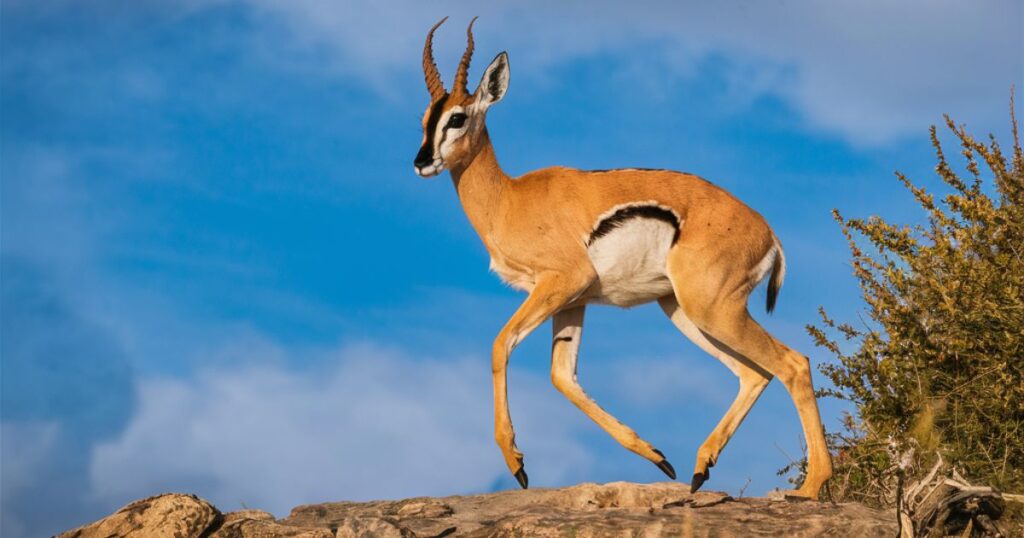Get ready to feel warm and fuzzy inside! These 50 cute animals are incredibly adorable. From fluffy puppies to tiny kittens, they’ll make your heart melt with their cuteness.
Get ready to melt with cuteness! These 50 adorable animals will make your heart sing. From fluffy kittens to playful puppies, get ready to say ‘Awww!’ like never before.
Get ready to feel warm inside! These 50 cute animals will make you say ‘Awww!’ They’re the most adorable creatures you’ll ever see.
50 Cute Animals
1. Sea Otter
Sea otters are furry mammals that live in the ocean. They have thick fur to keep them warm. Sea otters are excellent swimmers and spend most of their time in the water.
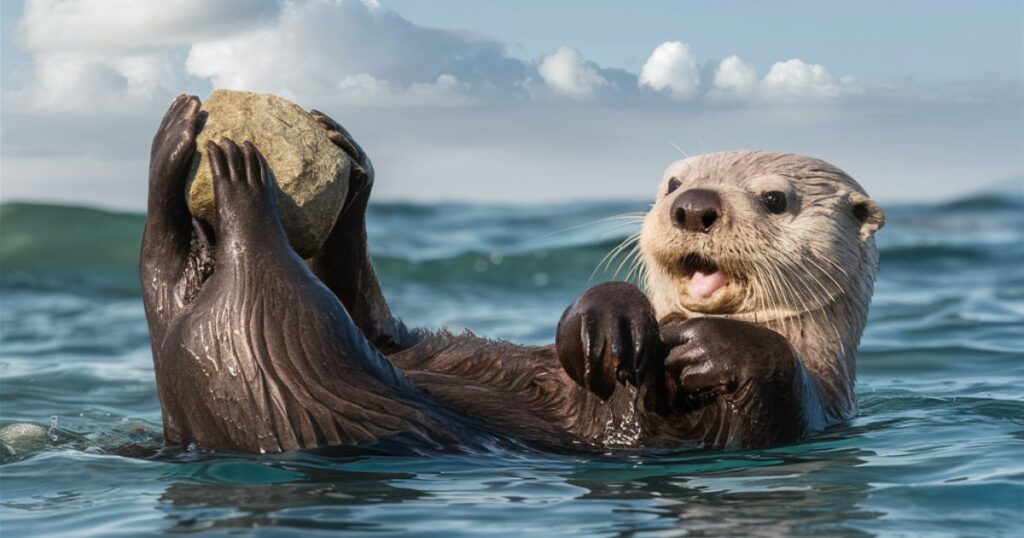
They love to eat seafood, especially clams and crabs. Sea otters use rocks to crack open their food. They often float on their backs while eating.
Sea otters hold hands when they sleep to avoid drifting apart. They live in groups called rafts. These groups provide safety and companionship.
2. Margay
The margay is a small wild cat found in Central and South America. It’s skilled at climbing trees and often hunts in the forest canopy. With its agility and sharp claws, it can catch birds, squirrels, and even monkeys.
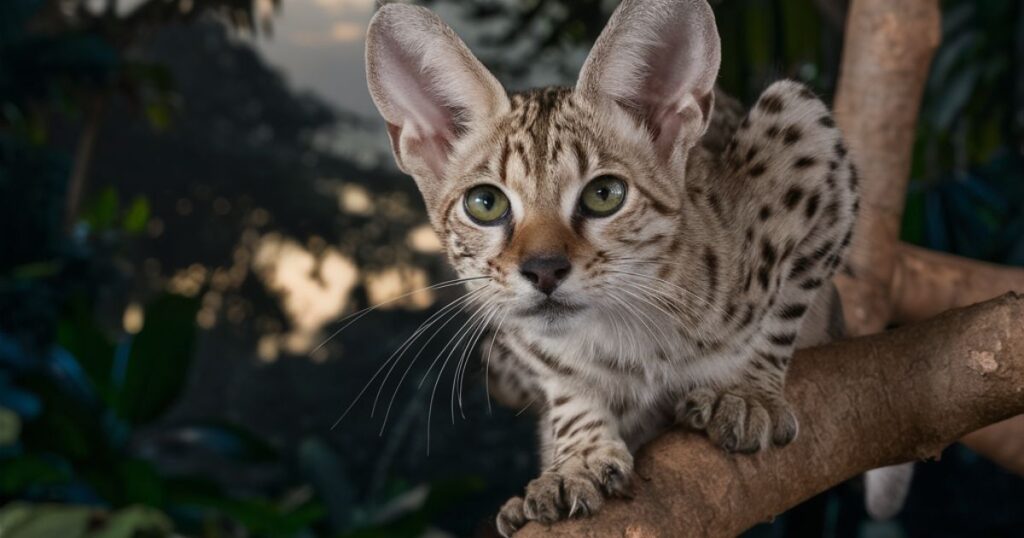
This cat has beautiful fur, with a pattern of spots and stripes. Its coat helps it blend into the dappled sunlight of the jungle. The margay’s tail is long and bushy, aiding in balance as it leaps from branch to branch.
Unlike many other cats, margays are solitary creatures. They mark their territory with scent glands and vocalizations. These elusive cats are mainly active at night, prowling quietly in search of prey.
3. Red Panda
The red panda is a charming creature found in the forests of Asia. With its distinctive reddish-brown fur and a long, bushy tail, it captures the hearts of many. Despite its name, the red panda is not closely related to the giant panda.
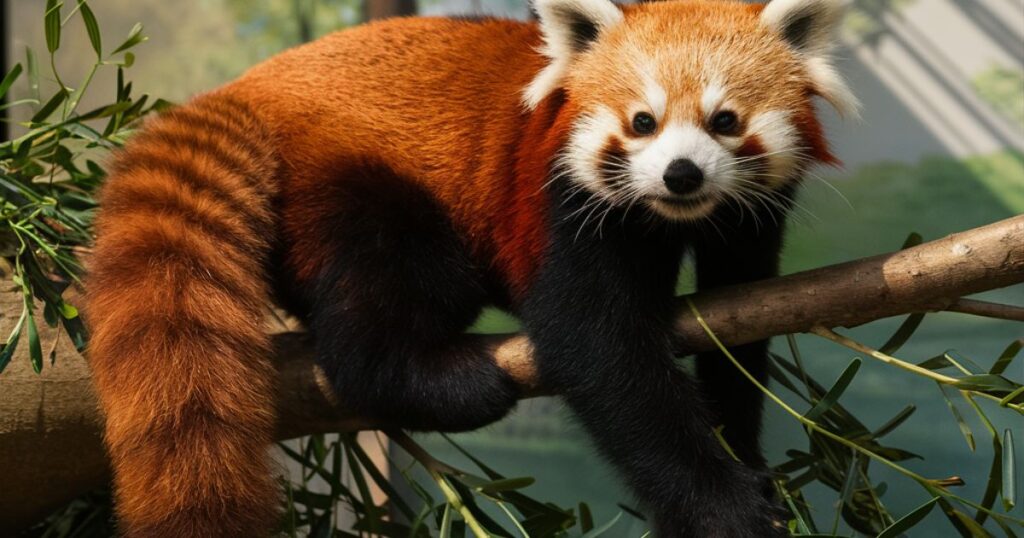
These adorable animals are skilled climbers, spending much of their time in the trees. Their agile movements and long tails assist them in navigating their arboreal habitats with ease. Red pandas primarily feed on bamboo, supplemented by fruits, insects, and occasionally small mammals.
4. Elephant Shrew
The elephant shrew is a small mammal native to Africa. Despite its name, it’s not closely related to elephants. These shrews have elongated noses resembling the trunks of elephants.
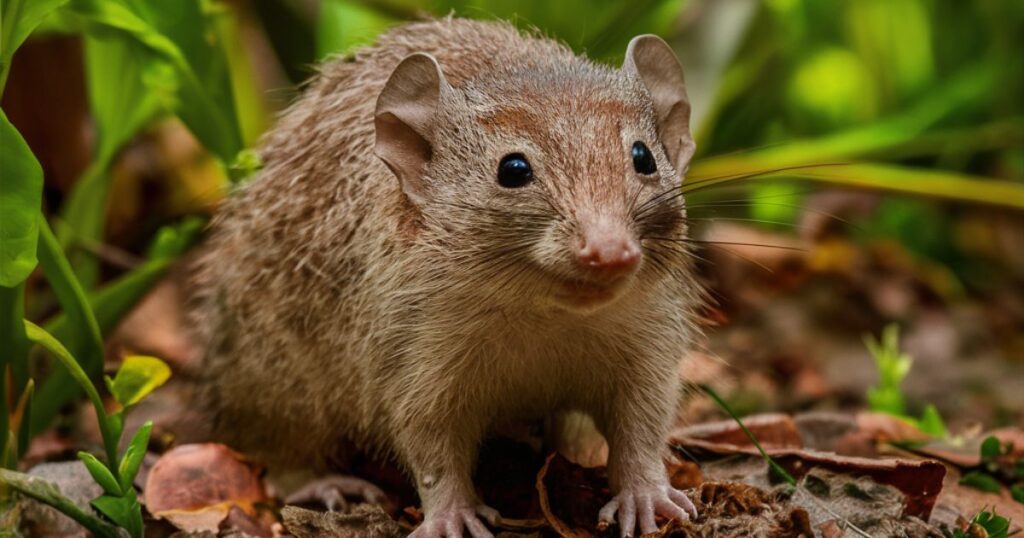
They are agile creatures, capable of moving swiftly through their grassland habitats. Elephant shrews primarily feed on insects, using their long noses to sniff out prey such as ants and termites.
Their unique physiology and behavior make them fascinating subjects for scientific study. Researchers are interested in understanding their evolutionary history and ecological role in African ecosystems.
Conservation efforts are essential to protect the habitats of elephant shrews. Habitat loss and fragmentation threaten their populations, emphasizing the need for conservation initiatives to ensure their survival in the wild.
5. Quokka
The quokka is a tiny marsupial from Australia, mostly seen in the southwest, like Rottnest Island. It’s famous for being super friendly, with a constant smile, making it one of the happiest animals around.
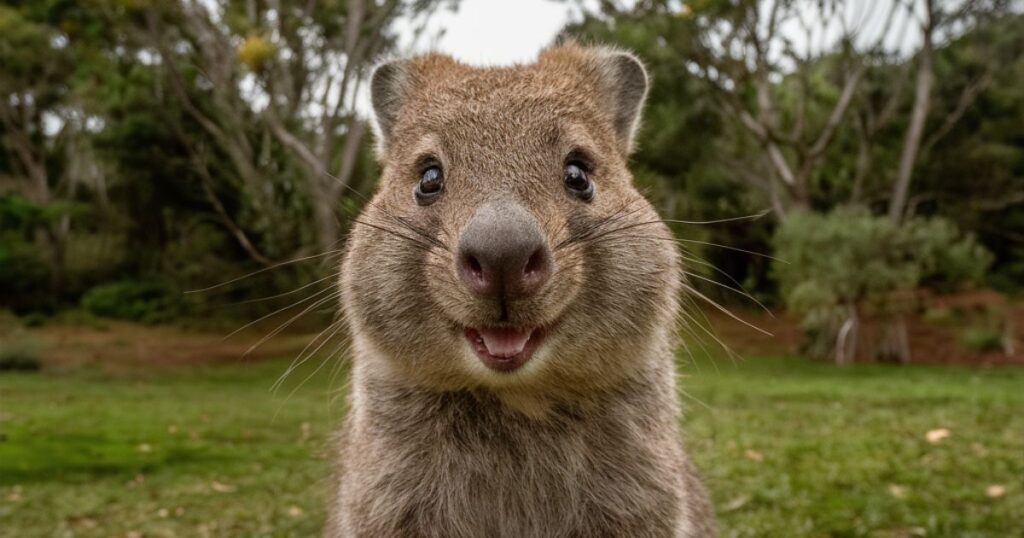
These nocturnal herbivores are primarily herbivorous, feeding on a variety of plants, grasses, and leaves. They are also known to consume small insects occasionally. Their natural habitat consists of dense vegetation in coastal dunes and forests.
6. Fennec Fox
The fennec fox is a small fox species native to the deserts of North Africa, particularly the Sahara Desert. The fennec fox is known for its big ears that keep it cool and help it hear better in the hot desert.
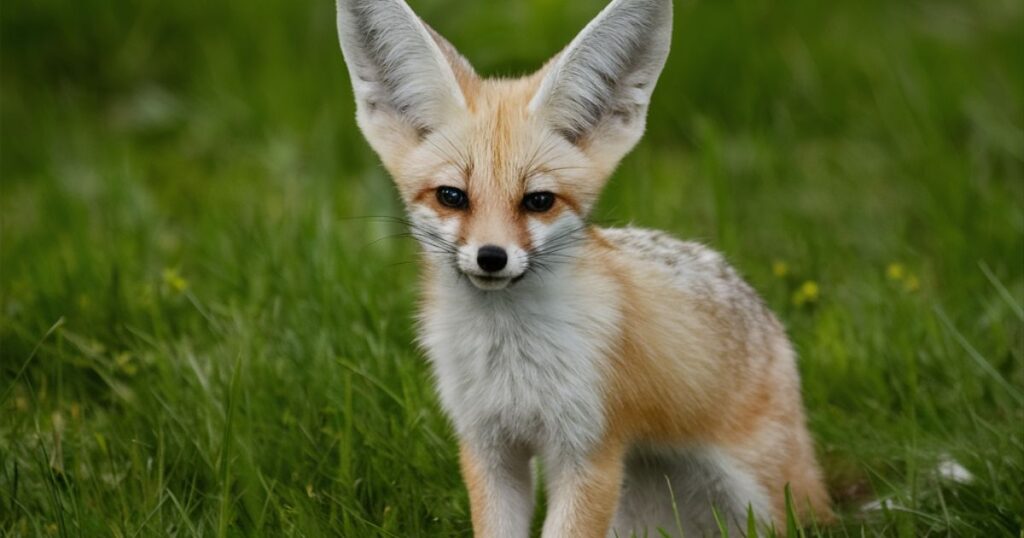
These nocturnal creatures primarily feed on a diet of insects, small rodents, birds, and fruit. Their keen senses and agility make them efficient hunters, allowing them to thrive in the harsh desert conditions.
Fennec foxes are solitary animals, typically only coming together for mating purposes. They dig elaborate burrow systems in the sand to seek shelter from extreme temperatures and predators..
7. Klipspringer
The klipspringer is a small antelope species native to rocky terrains in eastern and southern Africa. Its name comes from Afrikaans and means “rock jumper,” showcasing its skill in moving effortlessly on steep cliffs and rocky terrain.
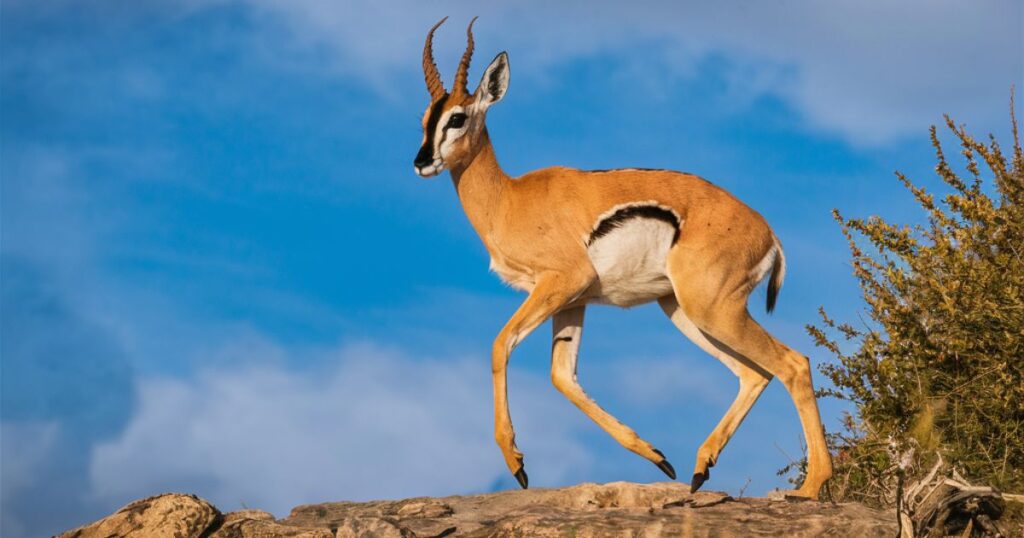
The klipspringer is a tiny antelope. It has short legs, round ears, and a special fur coat in shades of grayish-brown to reddish-brown. It thrives in rocky terrain, using its agile abilities to navigate its habitat effectively. Its hooves are specially designed to provide traction on rocky surfaces.
Klipspringers are predominantly herbivorous, feeding on a variety of plants, shrubs, and grasses found amidst rocky outcrops. They are primarily active during the early morning and late afternoon, seeking shelter during the heat of the day.
Recommended This Blog: TOP 10 BEST HARNESSES FOR GOLDENDOODLES
8. Japanese Weasel
The Japanese weasel, also known as the least weasel, is a small carnivorous creature commonly found in Japan and some parts of Asia. Despite its diminutive size, the Japanese weasel is a skilled hunter, preying on rodents, birds, insects, and occasionally small reptiles.
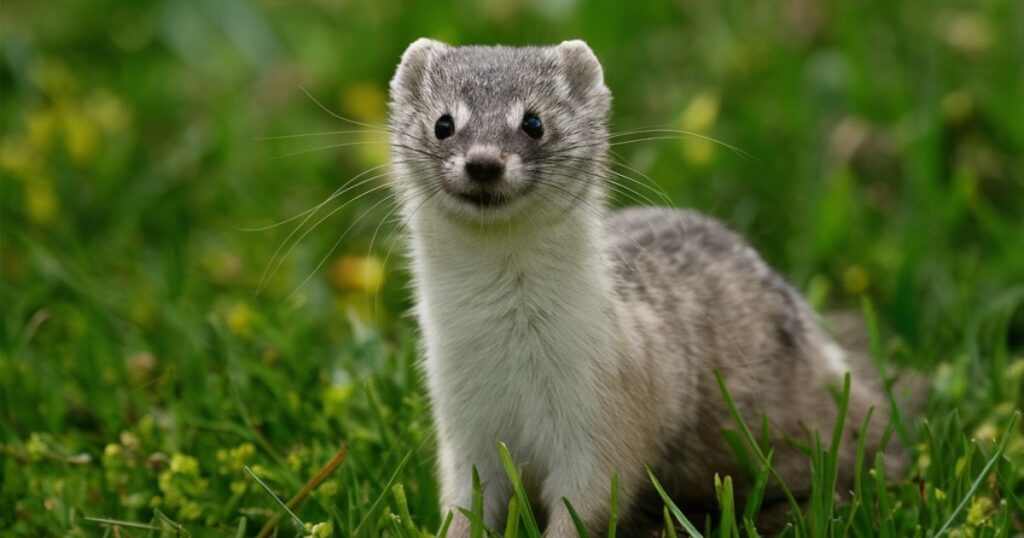
The Japanese weasel has a slim body, short legs, and a long, bendy neck. This helps it move swiftly and chase prey in different places like forests, grasslands, and farms.
Japanese weasels are solitary and territorial animals, with males often having larger territories than females. At night, they’re most active, relying on their sharp senses of sight, smell, and hearing to find food and stay safe from enemies.
9. Pika
The pika is a tiny mammal, like rabbits and hares, found in mountain areas across Asia, North America, and parts of Eastern Europe. Known for their round bodies, short limbs, and distinctive calls, pikas are adapted to cold, rocky environments.
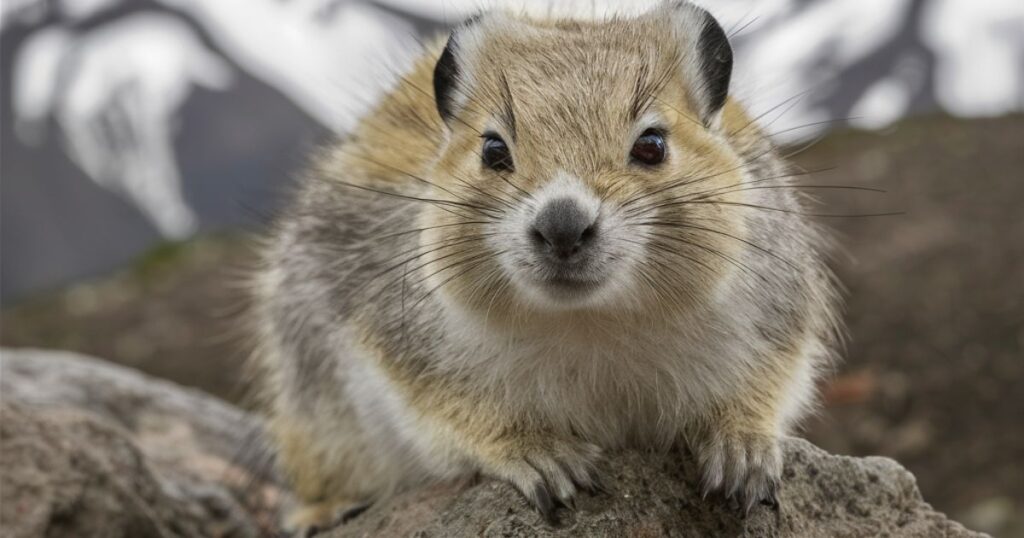
These herbivorous animals primarily feed on grasses, herbs, and small shrubs, storing food in haypiles to sustain them through the winter months when food is scarce. Their haypiles also serve as insulation in their burrow systems.
Pikas are diurnal and highly territorial, with individuals fiercely defending their territories from intruders. They communicate with each other using a variety of vocalizations, including alarm calls to warn of predators.
10. Quoll
The quoll is a carnivorous marsupial native to Australia and New Guinea, known for its spotted coat and sharp teeth. There are several species of quolls, ranging in size from the small northern quoll to the larger spotted-tailed quoll.
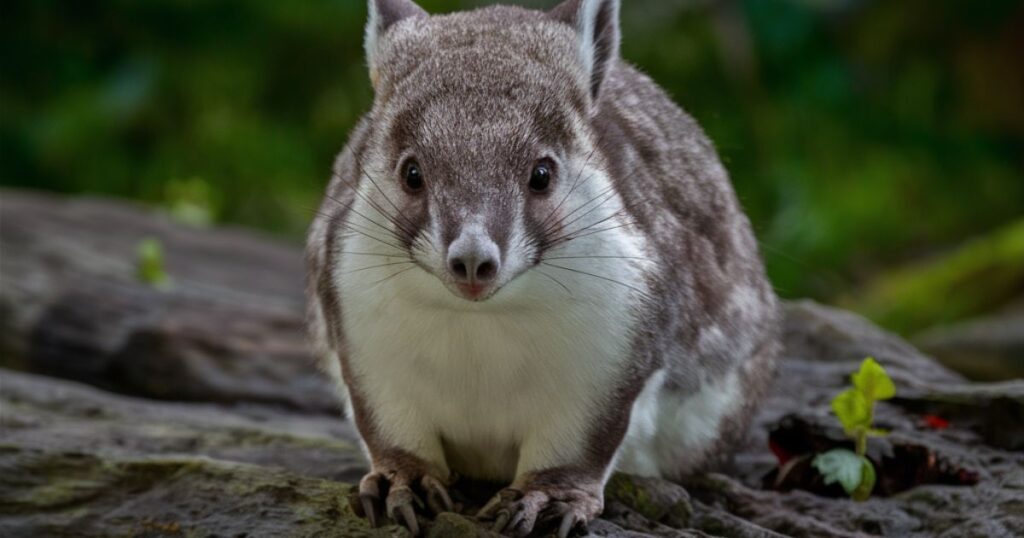
These nocturnal hunters primarily feed on a variety of prey, including insects, small mammals, birds, reptiles, and even carrion. Their opportunistic diet and agile hunting skills make them important predators in their ecosystems.
11. Capybara
The capybara is the world’s largest rodent species, native to South America and found in habitats ranging from grassy plains to tropical rainforests. Recognizable by their large size, barrel-shaped bodies, and webbed feet, capybaras are well-adapted for life both on land and in water.
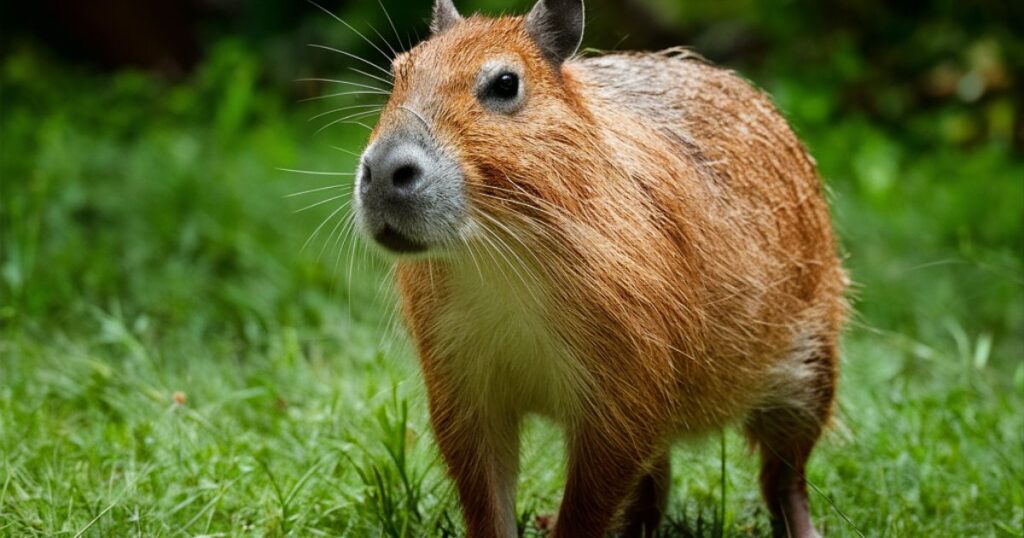
These herbivorous mammals primarily feed on grasses, aquatic plants, and fruits, often grazing near bodies of water where they can easily escape predators. Their social nature is notable, often forming groups of up to 100 individuals led by a dominant male.
12. Patagonian Mara
The Patagonian mara, also known as the Patagonian cavy or the Patagonian hare, is a large rodent species native to Argentina. Resembling a cross between a rabbit and a deer, these herbivores have long hind legs, slender bodies, and distinctive ears.
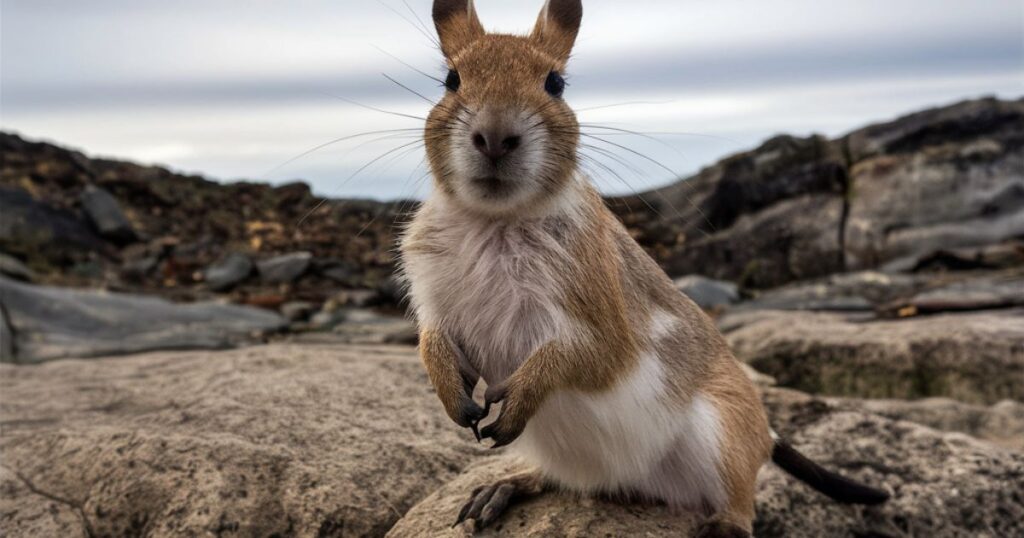
They inhabit open grasslands and scrublands, where they graze on a variety of vegetation, including grasses, herbs, and shrubs. Their keen sense of hearing and sight helps them detect predators such as foxes and birds of prey.
Patagonian maras are highly social animals, living in monogamous pairs or small groups known as “warrens.” They communicate through vocalizations and scent marking, maintaining strong bonds within their social units.
13. Mangalitsa
The Mangalitsa is a rare breed of domestic pig known for its unique woolly coat, which resembles that of a sheep. Originating in Hungary during the 19th century, Mangalitsas were bred for their high-fat content and flavorful meat.
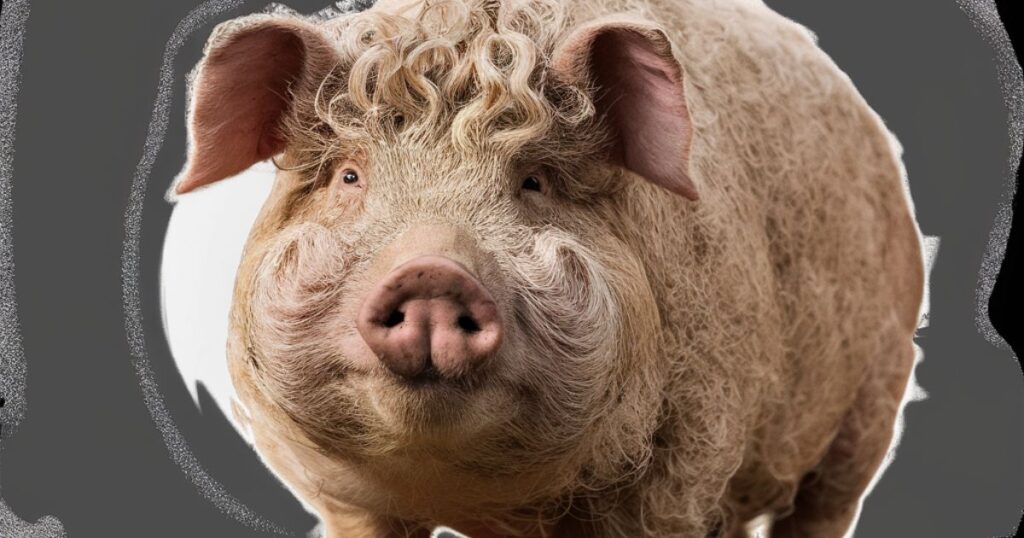
Their thick, curly fur comes in various colors, including blonde, brunette, and black. This distinctive appearance allows them to withstand harsh weather conditions, making them well-suited for outdoor husbandry.
Mangalitsas are known for their docile temperament and adaptability to different environments. They are primarily raised for their high-quality, marbled meat, which is prized by chefs and food enthusiasts for its rich flavor and tenderness.
14. Tarsier
The tarsier is a small primate found in various Southeast Asian islands, including the Philippines, Borneo, and Sumatra. Known for its distinctive large eyes and elongated ankle bones, which give it its name, the tarsier is a nocturnal hunter.
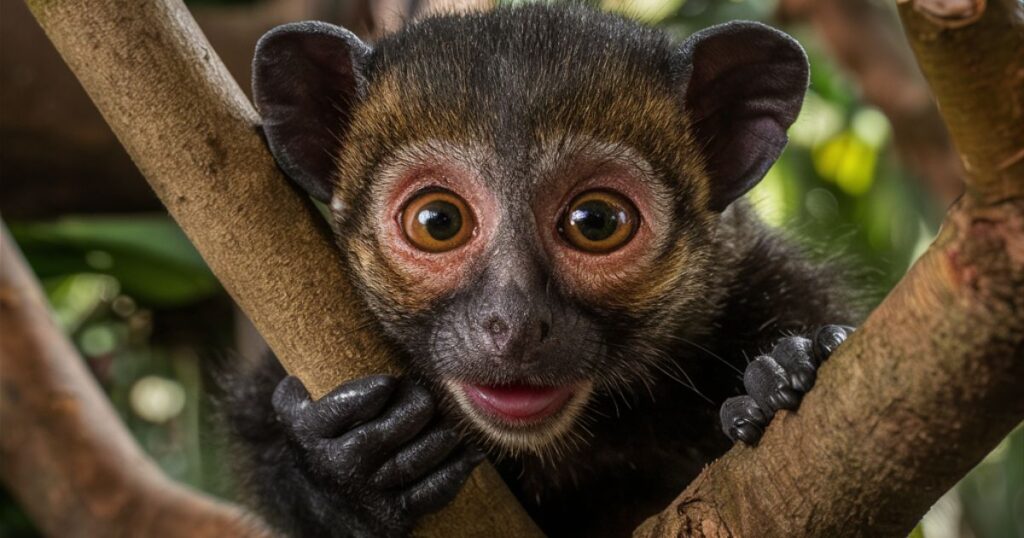
With eyes larger than its brain and the ability to rotate its head 180 degrees, the tarsier possesses exceptional night vision and depth perception, allowing it to catch insects and small vertebrates with precision.
Tarsiers are solitary and territorial animals, marking their territories with scent glands and communicating through vocalizations. They inhabit dense forests and spend their days resting in tree hollows or dense vegetation.
15. Axolotl
The axolotl is a unique amphibian species native to the freshwater lakes and canals of Mexico, particularly in the basin of Mexico City. Known for its external gills and regenerative abilities, the axolotl is often referred to as a “walking fish” due to its larval features retained into adulthood.
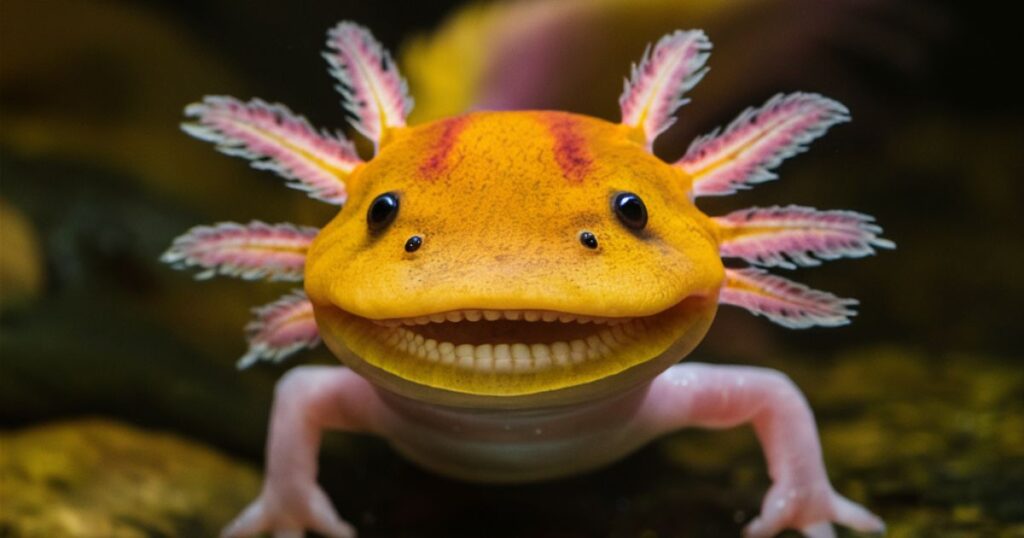
Axolotls have a remarkable ability to regenerate lost body parts, including limbs, spinal cord, and even parts of their brain. This regenerative capacity has made them invaluable to scientific research in fields such as regenerative medicine and developmental biology.
16. Tawny Frogmouth
The tawny frogmouth is a unique bird species native to Australia, often mistaken for an owl due to its nocturnal habits and camouflage plumage. With a distinctive wide beak and large, forward-facing eyes, the tawny frogmouth is an expert hunter of insects, small mammals, and reptiles.
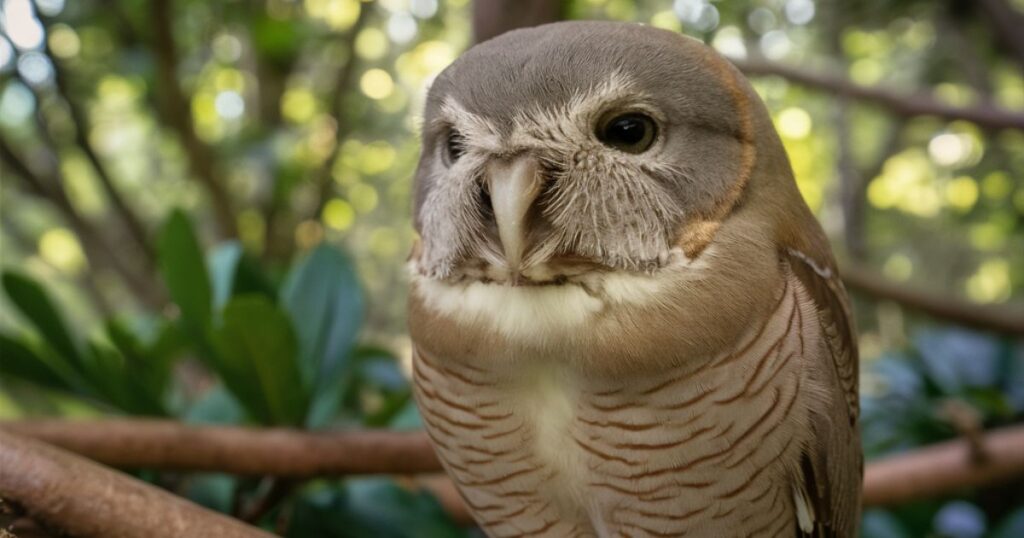
These birds are masters of disguise, blending seamlessly with tree bark and branches during the day to avoid detection by predators and prey alike. Their cryptic plumage helps them remain hidden while they roost in trees, where they spend much of their time.
17. Star-Nosed Mole
The star-nosed mole is a tiny mammal from eastern North America. It’s famous for its nose shaped like a star with 22 little fingers. This nose is super special, with thousands of sensors helping the mole find food and move around underground with great accuracy.
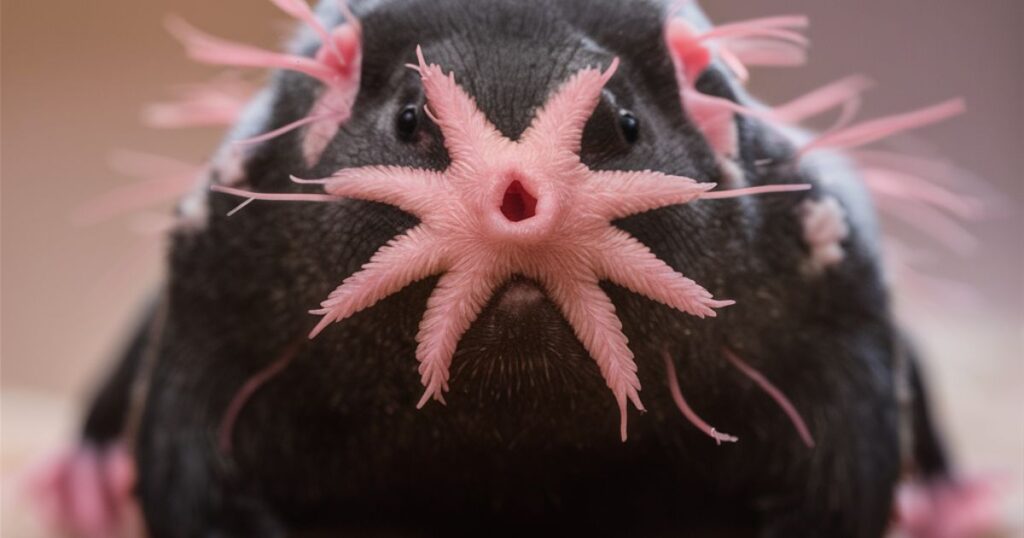
With shovel-like front paws and powerful claws, star-nosed moles are expert burrowers, creating elaborate tunnel systems underground. They primarily feed on small invertebrates such as worms, insects, and mollusks, using their sensitive nose to locate prey in the darkness.
18. Leafy Seadragon
The leafy seadragon is a fascinating marine fish native to the coastal waters of southern and western Australia. Resembling floating seaweed with its leaf-like appendages, the leafy seadragon is a master of camouflage, blending seamlessly into its surroundings to evade predators and ambush prey.
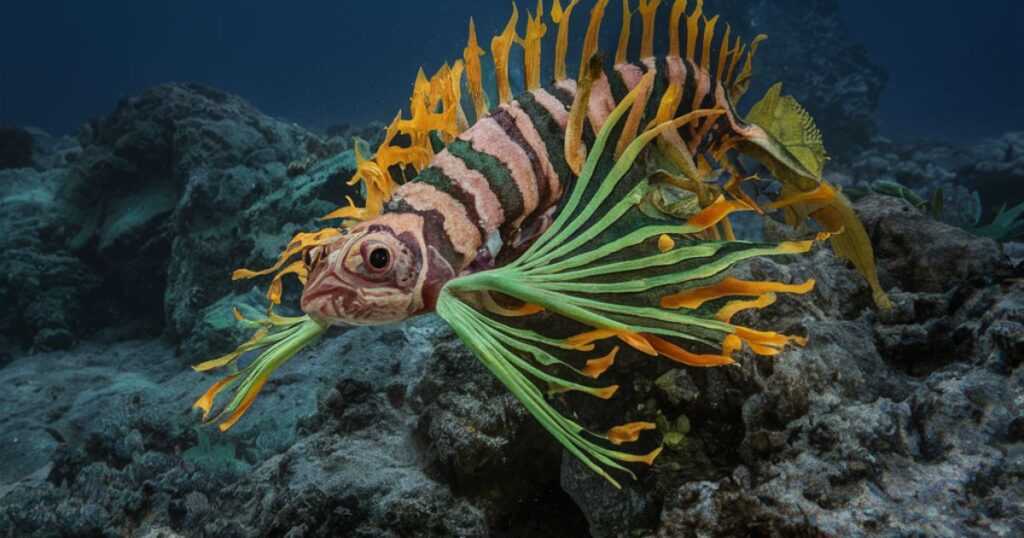
These unique creatures belong to the same family as seahorses and pipefish and share their characteristic elongated bodies and unique reproductive behavior. Leafy seadragons are known for their graceful movements as they glide through seaweed beds and rocky reefs.
Leafy seadragons primarily feed on small crustaceans and plankton, which they suck into their tubular snouts. Despite their intricate appearance, they are relatively passive and rely on their camouflage to avoid detection by predators such as larger fish and cephalopods..
19. Honduran White Bat
The Honduran white bat, also known as the Caribbean white tent-making bat, is a small species of bat native to Central America, particularly Honduras, Nicaragua, Costa Rica, and Panama. Unlike many other bat species, the Honduran white bat has striking white fur, which serves as camouflage against the sun-dappled foliage of its forest habitat.
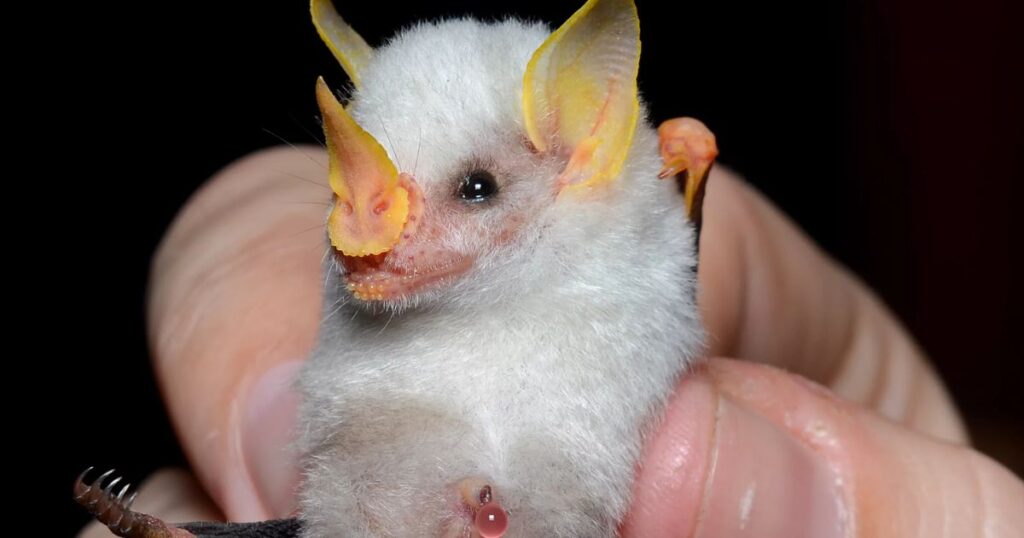
These bats are famous for their unique roosting behavior, where they construct “tents” out of large, heliconia leaves. By biting through the midribs of the leaves, the bats cause them to fold into a tent-like structure, providing shelter from rain and predators while they roost during the day.
20. Thirteen-Lined Ground Squirrel
The thirteen-lined ground squirrel is a small mammal native to North America, commonly found in grasslands, prairies, and open woodlands across the central United States and parts of Canada. Named for the thirteen alternating dark and light stripes that run along their backs, these squirrels are also known as “striped gophers” or “leopard ground squirrels.”
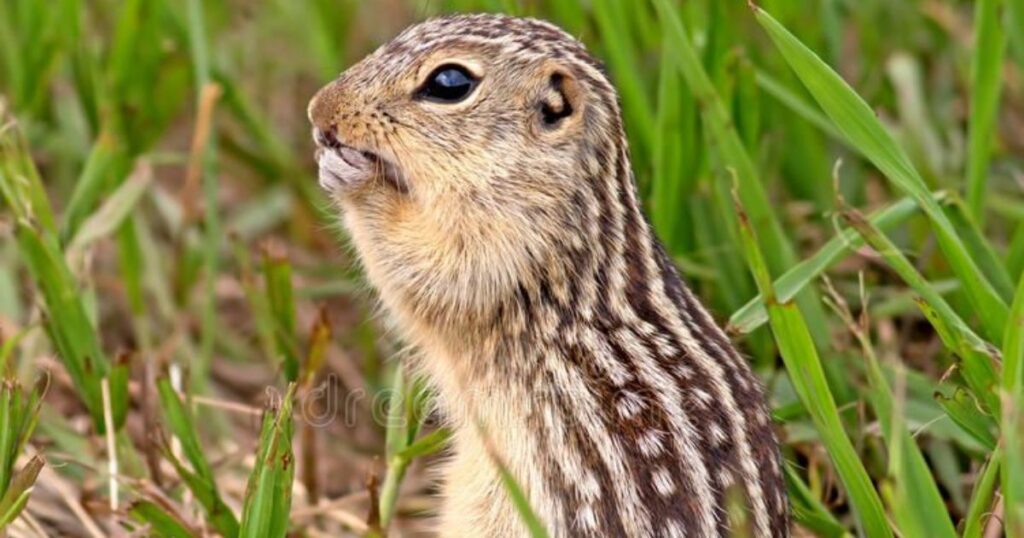
These diurnal rodents are highly adaptable and can thrive in a variety of habitats, including agricultural fields and urban parks. They are skilled burrowers, creating extensive underground tunnel systems for nesting, hibernating, and raising their young.
21. Long-Tailed Tit
The long-tailed tit is a small, colorful bird found throughout Europe and parts of Asia. It is known for its distinctive appearance, characterized by a long tail, pinkish plumage, and black and white markings on its head.
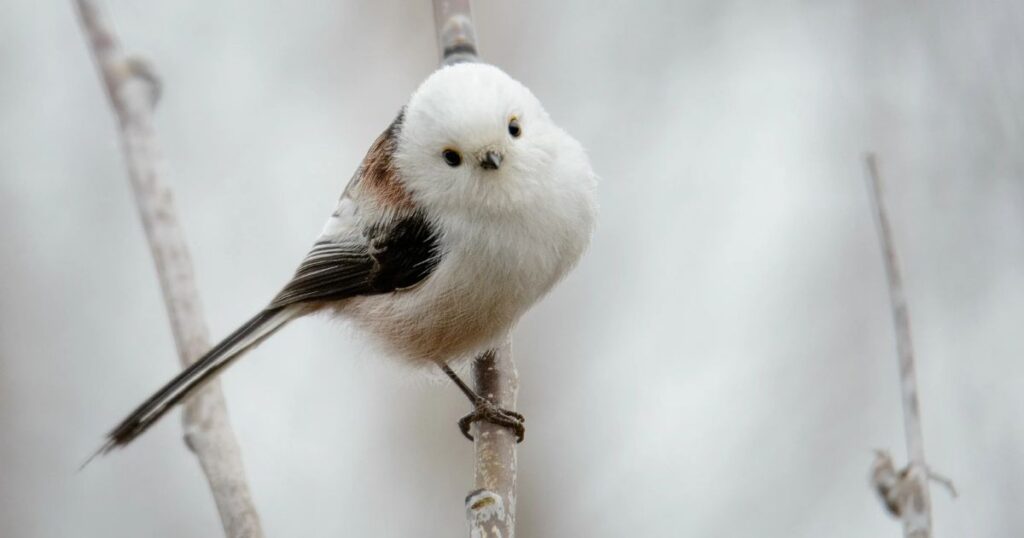
These sociable birds are often seen in small, lively flocks, flitting through woodlands, gardens, and hedgerows in search of insects and spiders. They build intricate, pouch-shaped nests from moss, lichen, and spider silk, often hidden amidst dense foliage for protection.
22. Chevrotain
The chevrotain, also known as the mouse deer, is a small ungulate found in forests across Africa, South and Southeast Asia. It is characterized by its tiny size, slender legs, and short, rounded snout.
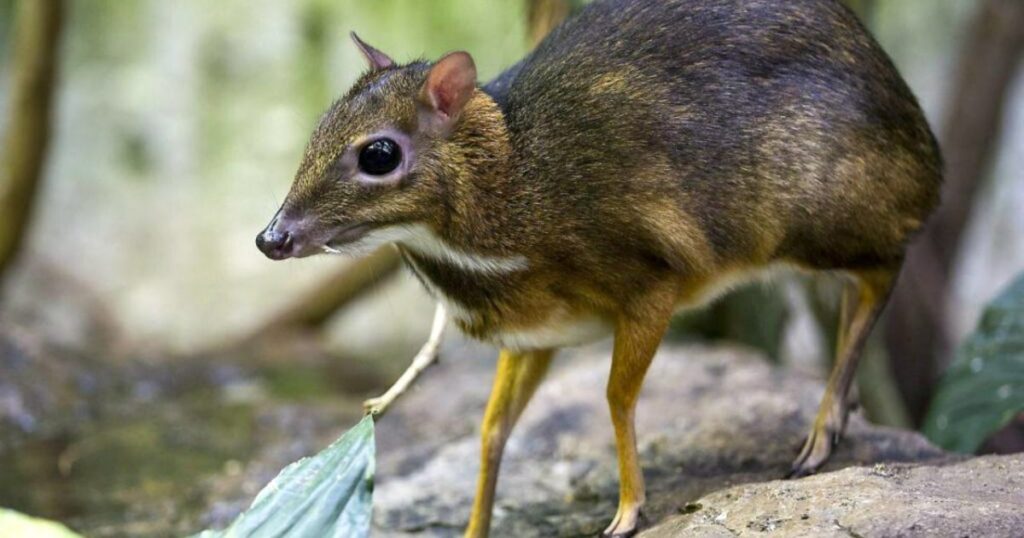
Despite its deer-like appearance, the chevrotain is more closely related to pigs and hippos. It is primarily nocturnal, foraging for fruits, leaves, and small insects under the cover of darkness. Due to habitat loss and hunting, some species of chevrotain are facing conservation concerns.
23. Pygmy Hippopotamus
The pygmy hippopotamus is a small, elusive mammal found in the forests and swamps of West Africa. Unlike its larger cousin, the common hippopotamus, the pygmy hippo has a smaller size, with adults typically weighing around 400 to 600 pounds.
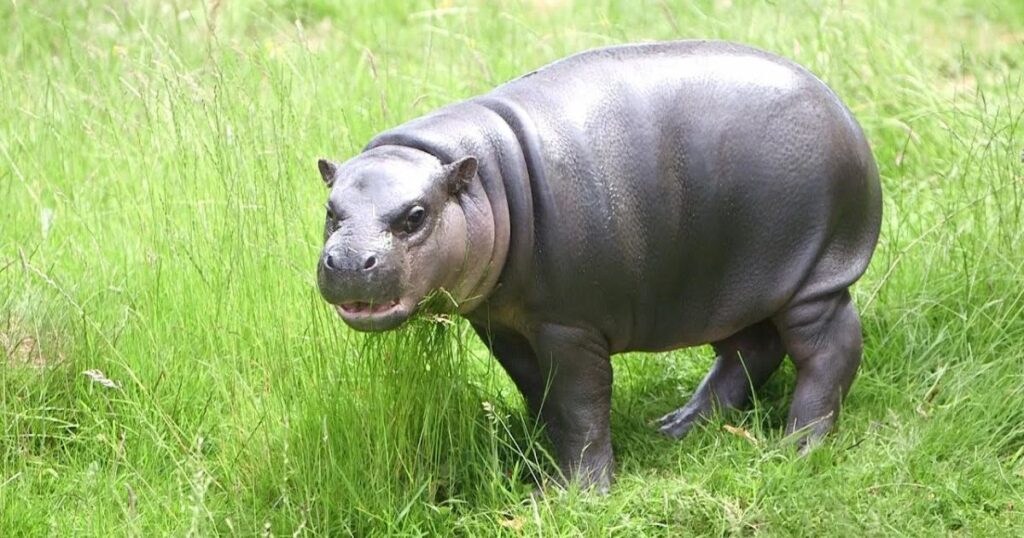
These solitary animals are primarily nocturnal, spending much of their time submerged in water to keep cool and avoid predators. They are herbivores, feeding on a diet consisting mainly of grasses, leaves, and fallen fruits. Despite being classified as endangered due to habitat loss and poaching, conservation efforts aim to protect their remaining habitats and ensure their survival in the wild.
24. Binturong
The binturong, also known as the bearcat, is a large, arboreal mammal native to Southeast Asia. It has a distinctive appearance, with shaggy black fur, a prehensile tail, and a face resembling that of a bear.
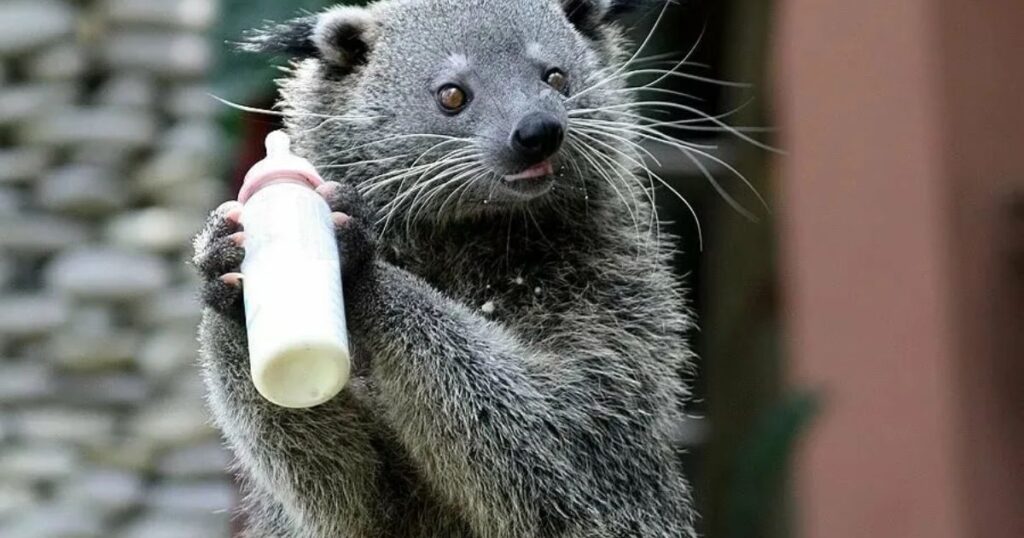
the binturong is not related to bears or cats but is instead a member of the Viverridae family, which includes civets and genets. These omnivorous animals feed on a varied diet of fruits, leaves, insects, small mammals, and birds. With their habitats facing threats from deforestation and hunting, binturongs are considered vulnerable, prompting conservation efforts to protect their populations and habitats.
25. Sand Cat
The sand cat is a small wild cat species native to deserts in North Africa, the Middle East, and Central Asia. It is well-adapted to its arid habitat, with large ears and thick fur on its paws to protect against hot sand.
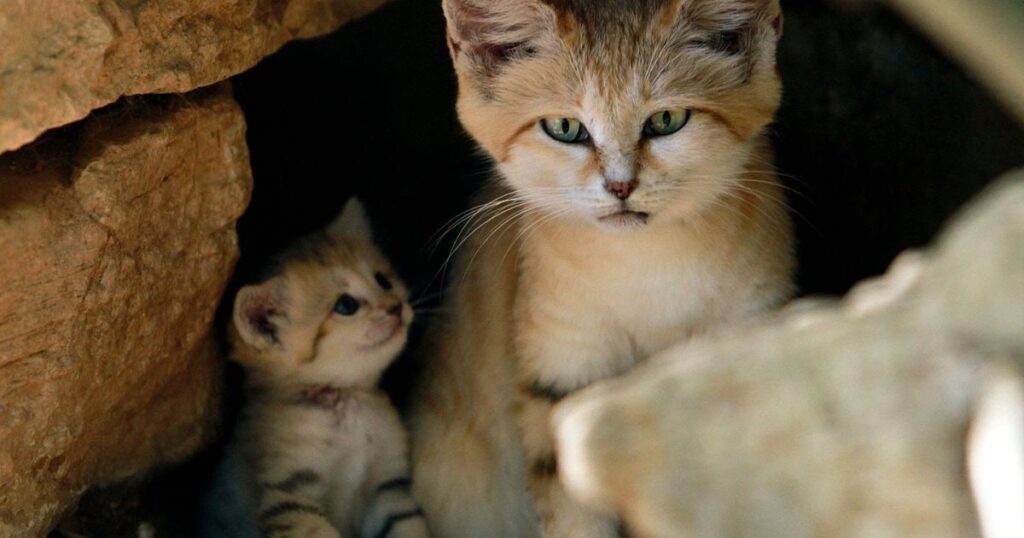
These nocturnal hunters primarily feed on small rodents, birds, and insects, relying on their keen senses of sight and hearing to locate prey in the darkness. Despite their desert adaptations, sand cats face threats from habitat degradation and hunting, leading to conservation efforts to protect their populations and habitats.
26. Slow Loris:
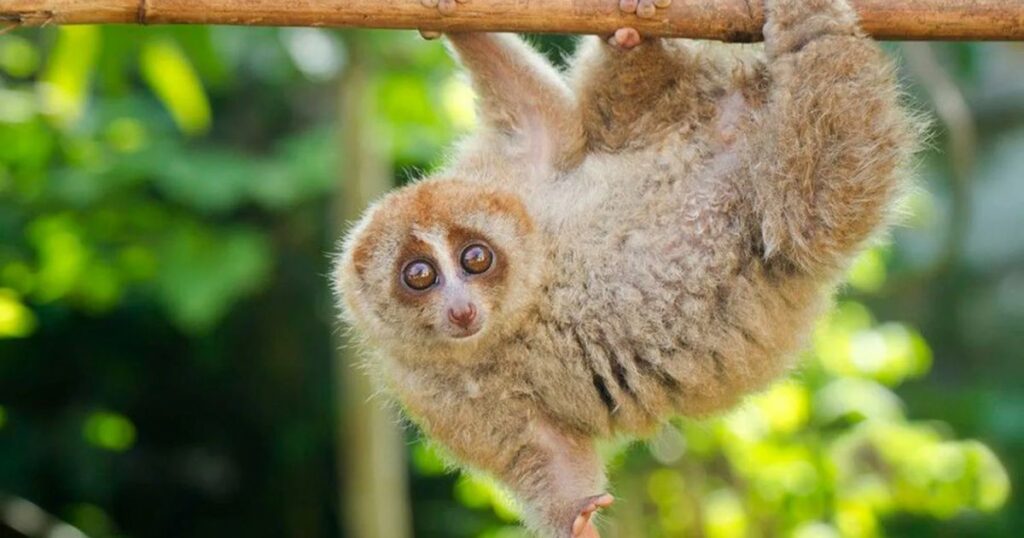
The slow loris, a nocturnal primate native to Southeast Asia, is recognized for its large, round eyes and deliberate movements. While it may appear endearing, the slow loris possesses venomous glands in its elbows, making it one of the few venomous mammals. Unfortunately, these unique traits have made slow lorises a target for the illegal pet trade, leading to their decline in the wild due to habitat loss and exploitation.
27. Mink:
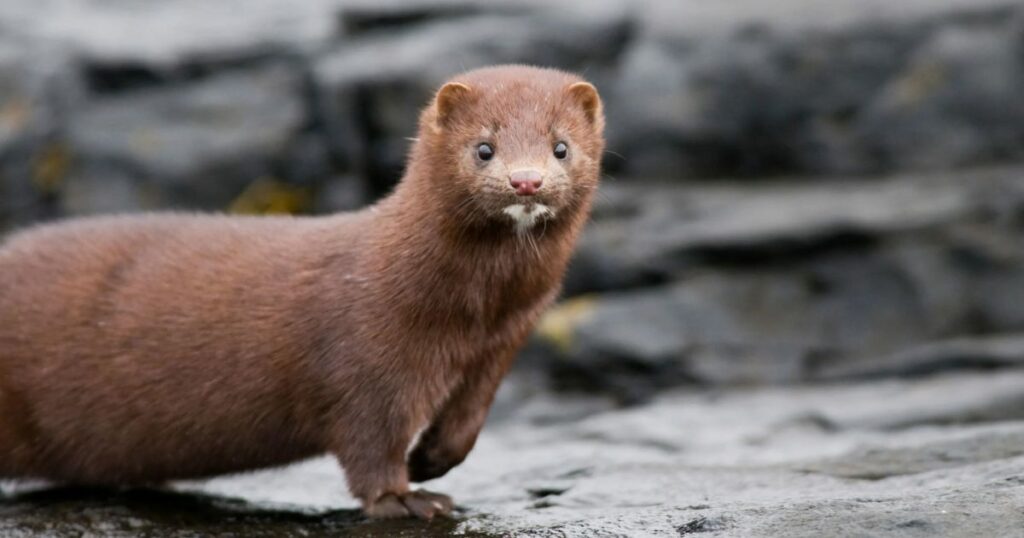
Mink, semi-aquatic mammals found across North America, Europe, and Asia, are valued for their luxurious fur, which is often used in the fashion industry. While wild mink are skilled hunters, preying on fish, amphibians, and small mammals, mink farming has become prevalent for fur production. However, escaped farmed mink pose a threat to native wildlife when introduced to new environments, leading to disruptions in ecosystems and declines in local species.
28. Arctic Fox:
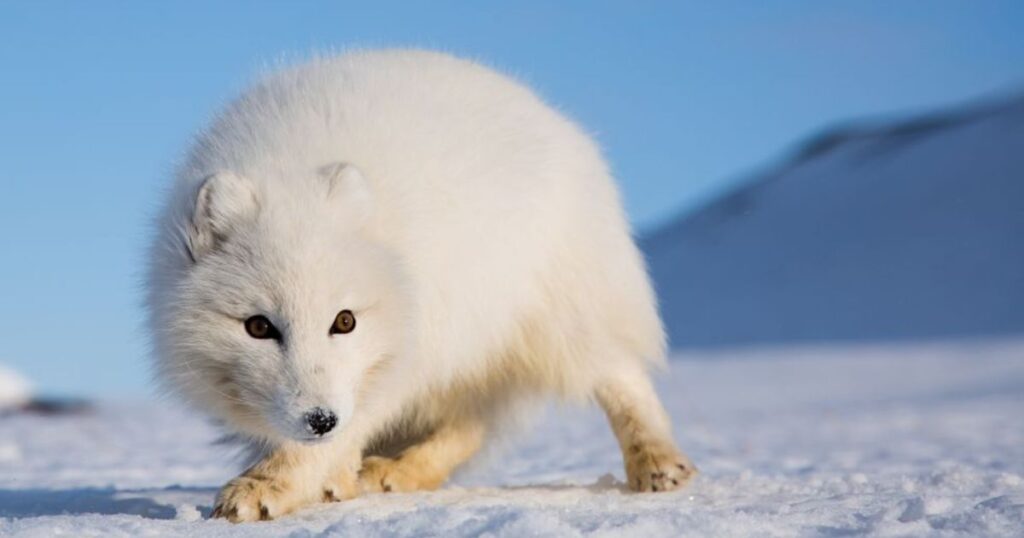
The Arctic fox, adapted to survive in frigid Arctic conditions, boasts a thick fur coat and compact body. These small foxes are opportunistic hunters, scavenging for carrion and preying on small mammals, birds, and fish to sustain themselves in their harsh habitat. Additionally, some Arctic fox populations exhibit seasonal color changes, with fur turning white in winter to blend in with the snow-covered landscape, and brown or gray during the summer months.
29. Pygmy Owl:
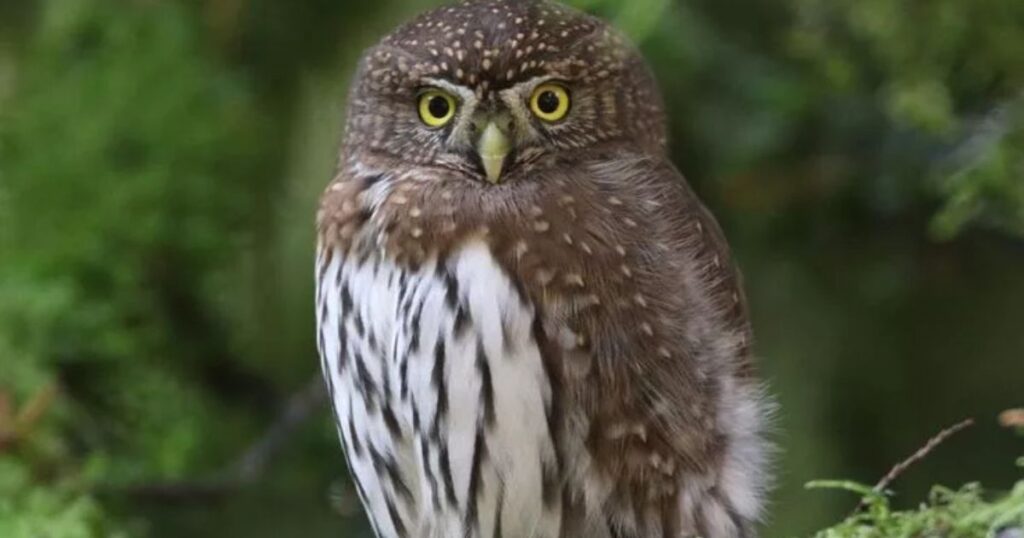
Pygmy owls, among the smallest owl species, are found in various habitats across Europe, Asia, and North America. Despite their size, they are proficient hunters, preying on insects, small mammals, and birds. With sharp talons and keen night vision, pygmy owls navigate dense woodlands to capture prey. Their distinctive calls echo through forests during dusk and dawn, as they establish territories and communicate with other owls.
30. Bee Hummingbird:
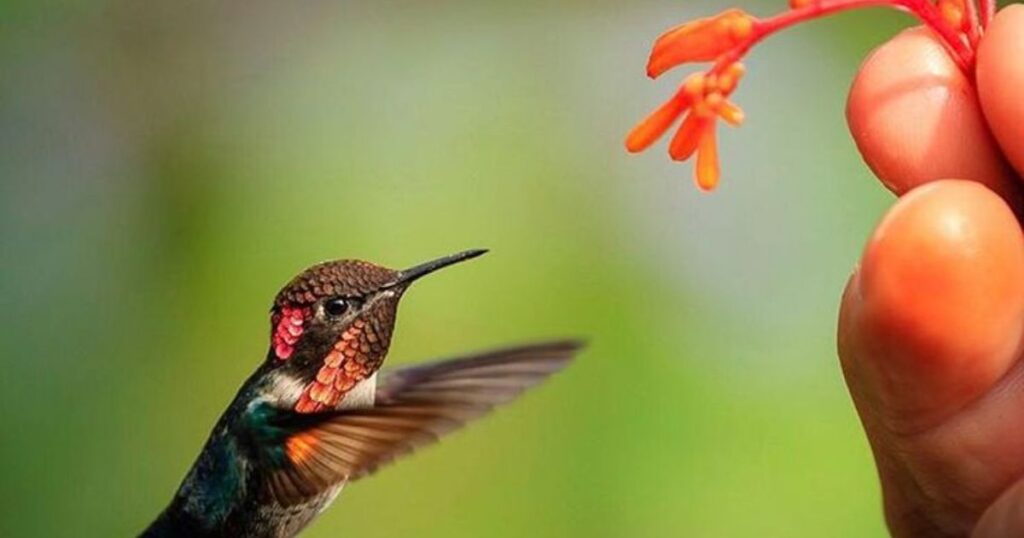
The bee hummingbird, native to Cuba and neighboring islands, holds the title of the world’s smallest bird species. With iridescent plumage and rapid wing beats, these tiny birds resemble flying jewels as they flit among flowers in search of nectar. Beyond their aesthetic appeal, bee hummingbirds play a vital role in pollination, contributing to the health and diversity of their island ecosystems. Despite their diminutive size, they are remarkable fliers, capable of traveling long distances during migration and adapting to various habitats across their range.
31. Tree-Kangaroo:
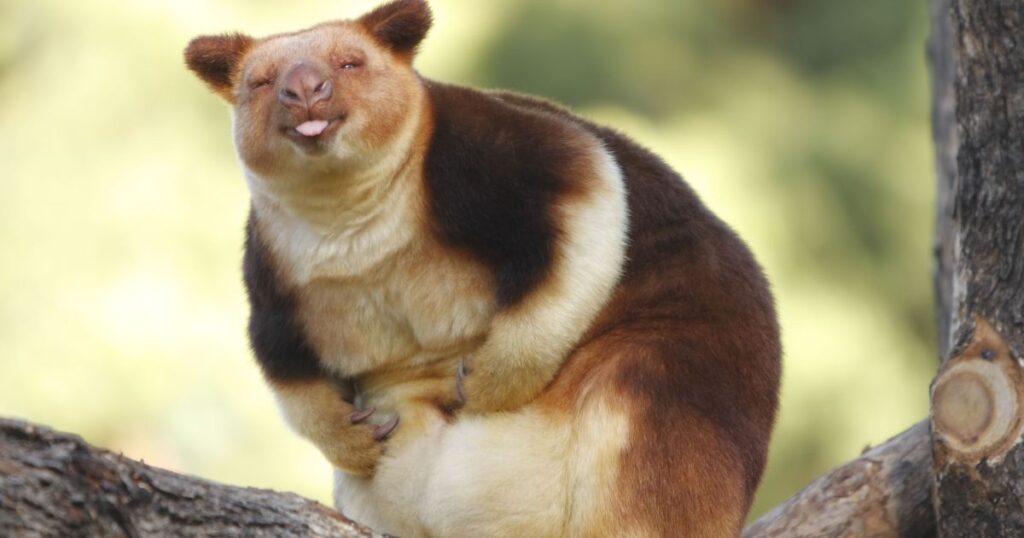
Tree-kangaroos are marsupials found in the rainforests of Australia, Papua New Guinea, and Indonesia. With their unique adaptation to arboreal life, tree-kangaroos possess strong limbs and sharp claws for climbing trees with ease. Unlike their ground-dwelling relatives, they have a longer tail for balance and shorter legs adapted for navigating dense forest canopies. Tree-kangaroos primarily feed on leaves, fruits, and flowers, using their strong jaws to strip foliage from branches.
32. Pygmy Goat:
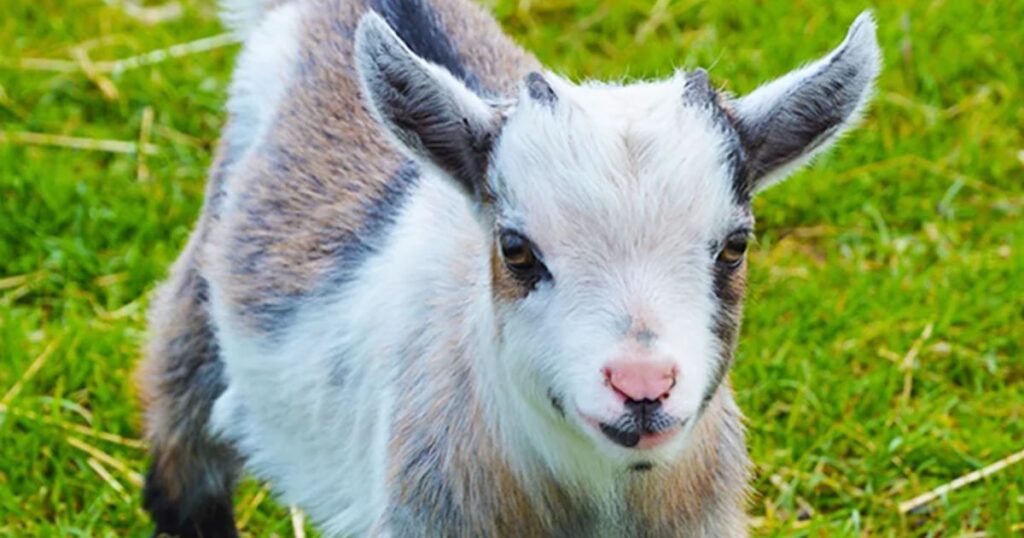
Pygmy goats are small domesticated goats known for their friendly demeanor and manageable size. Originating from West Africa, they have become popular as pets and companion animals worldwide due to their sociable nature and adaptability to various climates. Pygmy goats are efficient browsers, feeding on grasses, shrubs, and leaves. They are also valued for their milk production, which is rich in nutrients and often used for making cheese and soap.
33. Aardwolf:
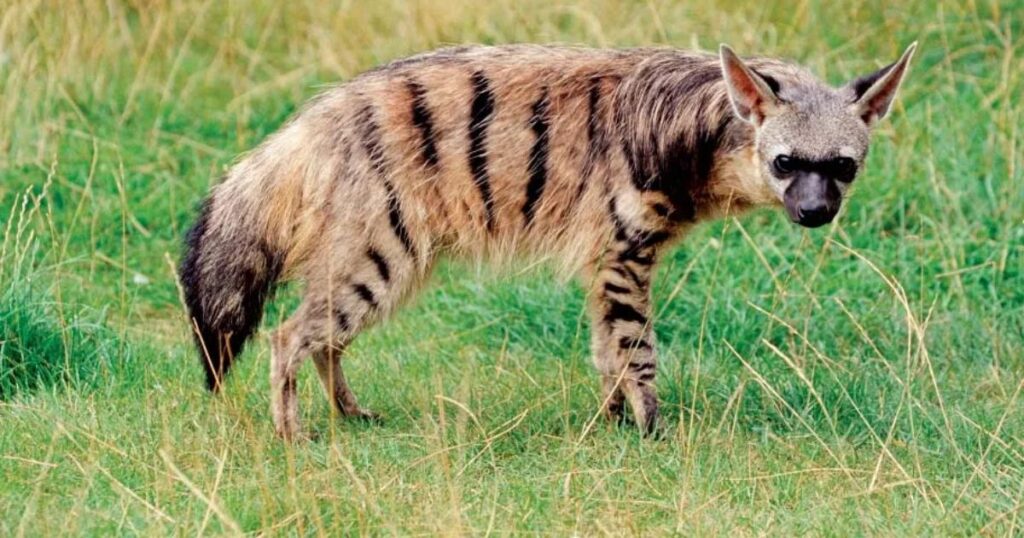
The aardwolf, meaning “earth wolf” in Afrikaans, is a small, insectivorous mammal native to eastern and southern Africa. Despite its name, it is not a true wolf but rather a member of the hyena family. Aardwolves are nocturnal creatures, emerging at night to hunt termites using their long, sticky tongues. They are solitary animals, often found in pairs or small family groups, and are known for their distinctive habit of vocalizing during termite foraging.
34. Raccoon Dog:
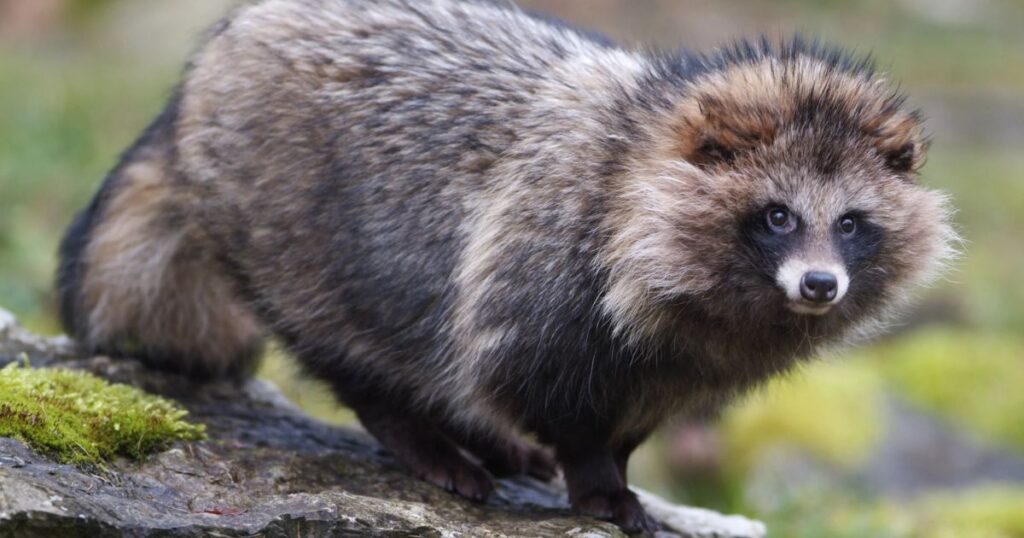
Raccoon dogs, native to East Asia, are small canids known for their striking resemblance to raccoons. These omnivorous mammals have adapted to a wide range of habitats, including forests, grasslands, and urban areas. Raccoon dogs are opportunistic feeders, consuming a diet consisting of fruits, berries, small mammals, insects, and carrion. Despite their name, they are not closely related to raccoons but share similar physical characteristics, such as facial markings and a bushy tail.
35. Gecko:
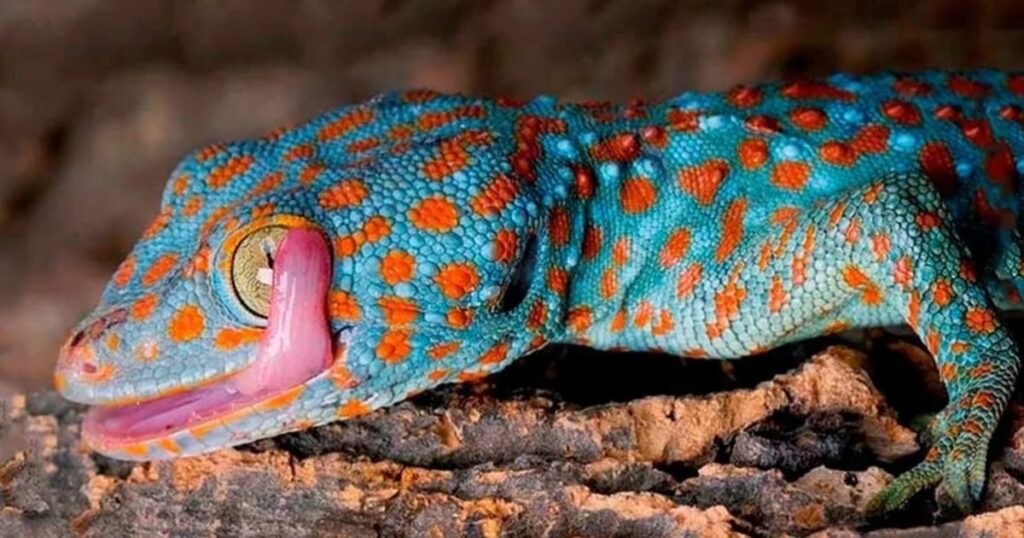
Geckos are a diverse group of small lizards found in warm climates around the world, with the highest diversity occurring in tropical regions. Known for their ability to climb smooth surfaces and even walk upside down on ceilings, geckos have specialized toe pads covered in microscopic hairs that create adhesive forces. These nocturnal hunters primarily feed on insects and other small invertebrates, using their keen senses of sight and smell to locate prey in the darkness.
36. Miniature Pig:
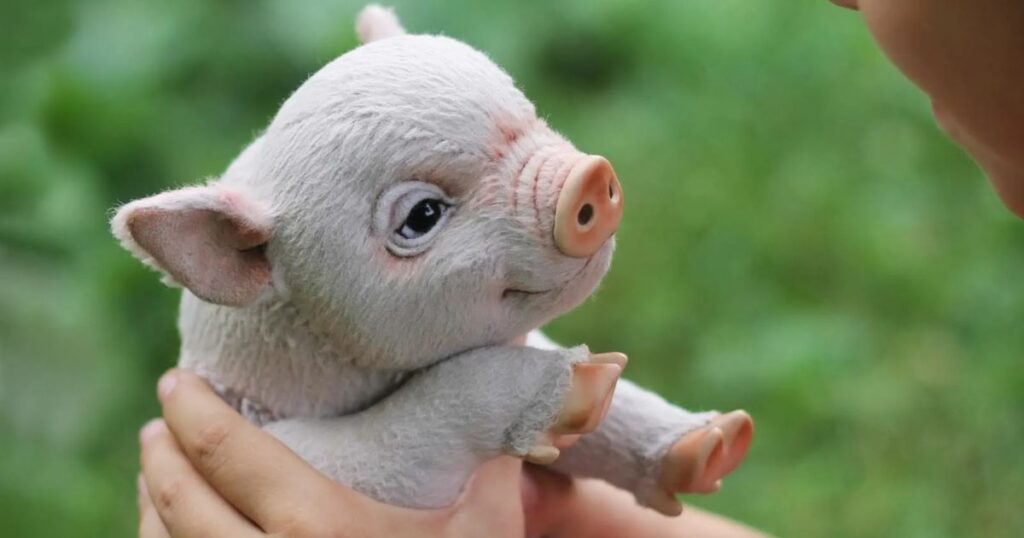
Miniature pigs, also known as teacup pigs or micro pigs, are small domesticated pigs selectively bred for their reduced size and docile temperament. Originally bred for medical research, miniature pigs have gained popularity as pets due to their intelligence, cleanliness, and adaptability to indoor living. While they require proper care and diet to maintain their health, miniature pigs can make affectionate and entertaining companions for responsible pet owners.
37. Cuttlefish:
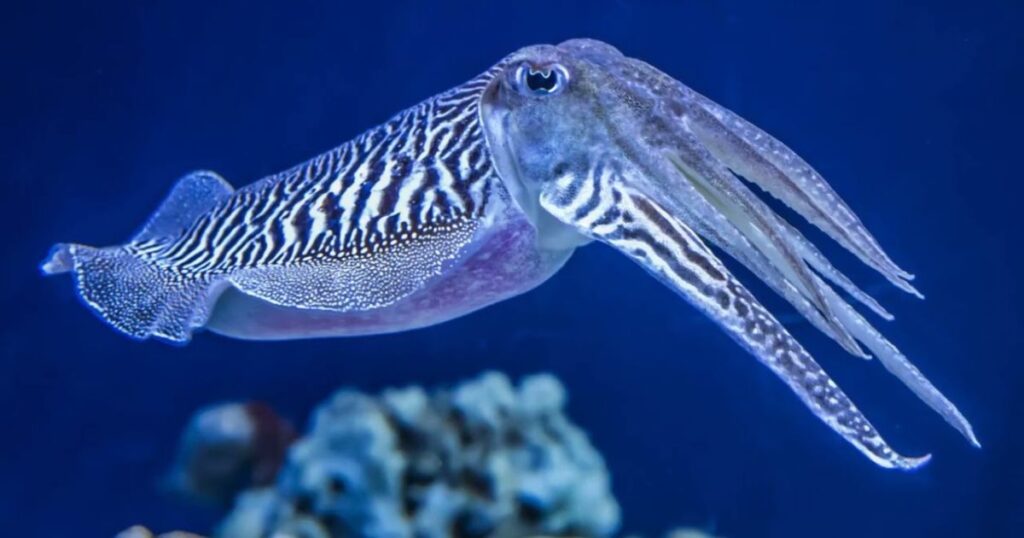
Cuttlefish are marine mollusks belonging to the cephalopod family, closely related to squids and octopuses. Known for their remarkable intelligence and ability to change color and texture to blend into their surroundings, cuttlefish are skilled hunters capable of capturing prey with their tentacles and paralyzing it with venom. These fascinating creatures are also masters of disguise, using their sophisticated camouflage techniques for both hunting and avoiding predators.
38. Quetzal:

The quetzal is a colorful bird species found in the rainforests of Central America, revered by ancient Mesoamerican cultures as a symbol of freedom and beauty. Known for its vibrant plumage and long, iridescent tail feathers, the quetzal is considered one of the most beautiful birds in the world. Despite their stunning appearance, quetzals are elusive and difficult to spot in the dense canopy, where they feed primarily on fruits, insects, and small vertebrates.
39. Okapi:
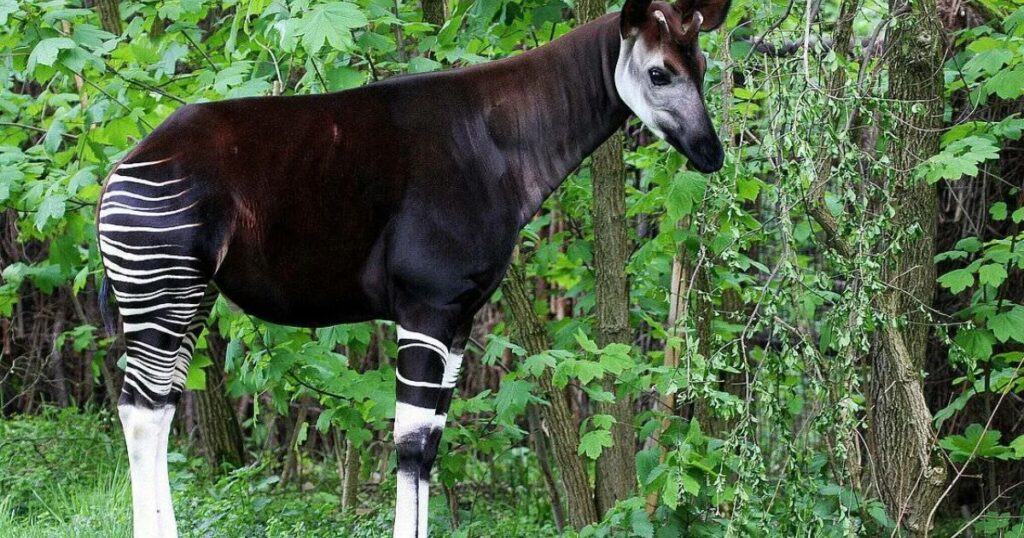
The okapi is a unique mammal native to the dense rainforests of the Democratic Republic of Congo in Central Africa. Resembling a cross between a giraffe and a zebra, the okapi has a dark brown body with white stripes on its hindquarters and legs. Despite their striking appearance, okapis are elusive and rarely seen in the wild, spending much of their time browsing on leaves, fruits, and other vegetation in the forest understory.
40. Spectacled Bear:
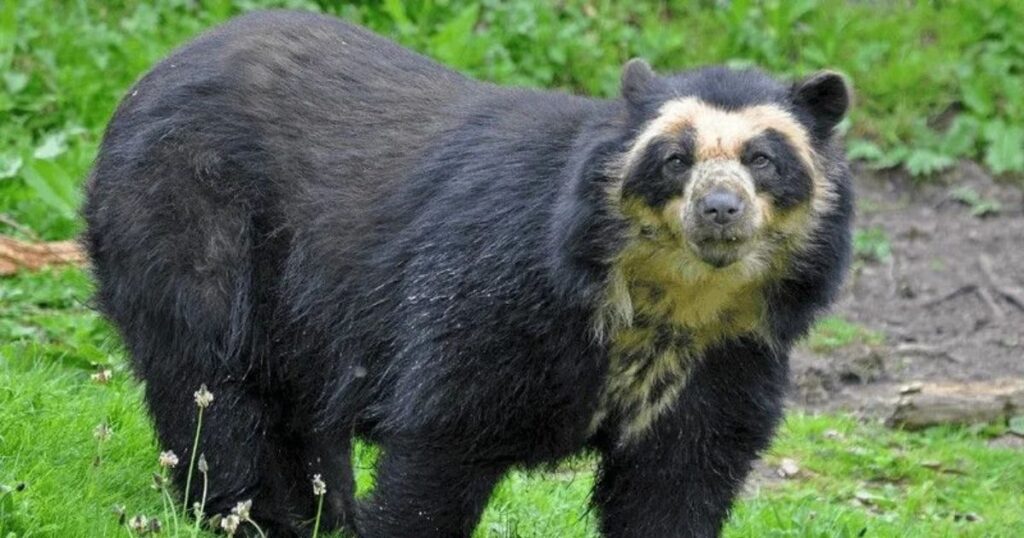
The spectacled bear, also known as the Andean bear, is the only bear species native to South America, found primarily in the Andean mountains. Named for the distinctive white or light-colored markings around their eyes, which resemble spectacles, these bears are excellent climbers and spend much of their time foraging for fruits, berries, and plants in the montane forests. Despite their shy nature, spectacled bears are threatened by habitat loss and poaching, leading to conservation efforts to protect their remaining populations and habitats.
41. Gerenuk:
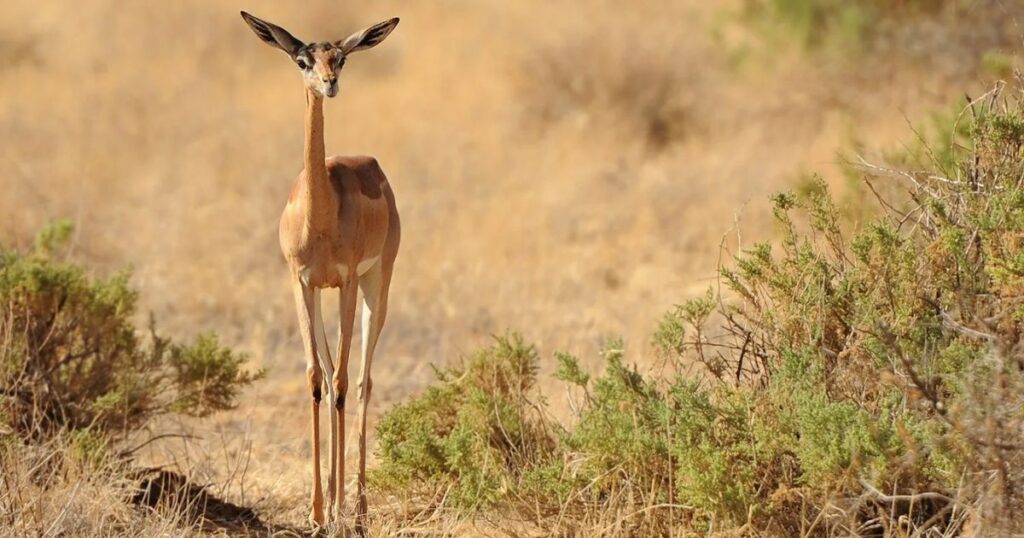
The gerenuk, also known as the giraffe gazelle, is a species of antelope found in the Horn of Africa and East Africa. Known for its long neck and slender legs, the gerenuk has adapted to its arid habitat by standing on its hind legs to reach leaves and shoots from tall shrubs and trees. This unique feeding behavior sets it apart from other antelope species and allows the gerenuk to thrive in semi-arid regions where food resources are scarce.
42. Tamandua:
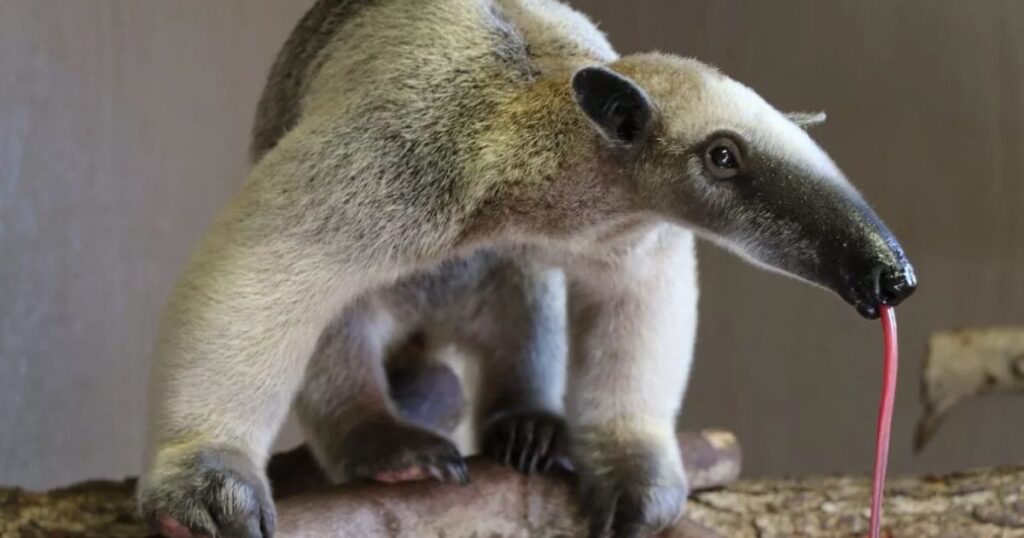
The tamandua, or lesser anteater, is a species of anteater found in Central and South America. With its long snout and sharp claws, the tamandua is well-adapted for feeding on ants and termites, which make up the bulk of its diet. Despite their solitary nature, tamanduas are excellent climbers and spend much of their time in the trees, using their prehensile tails for balance and support.
43. Viscacha:
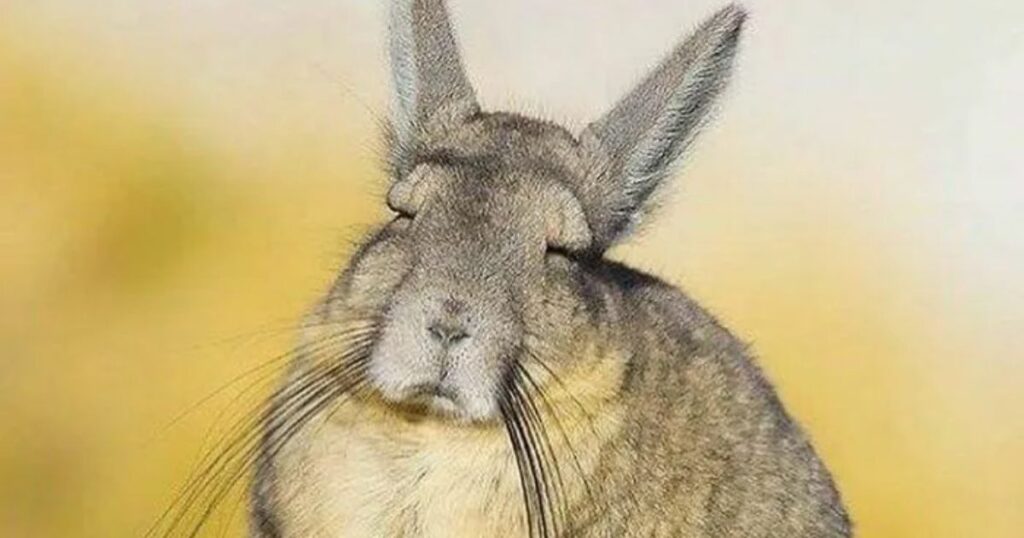
The viscacha is a rodent species native to the Andes mountains of South America. Resembling a cross between a rabbit and a squirrel, viscachas have long ears, soft fur, and a bushy tail. They inhabit rocky slopes and grasslands at high elevations, where they feed on grasses, herbs, and other vegetation. Viscachas are social animals, living in colonies and communicating through a variety of vocalizations.
44. Tamarin:

Tamarins are small New World monkeys found in the forests of Central and South America. Known for their distinctive facial markings and tufted ears, tamarins are highly social animals that live in family groups led by an alpha pair. They are omnivorous, feeding on a diet of fruits, insects, and small vertebrates. Tamarins play important roles in their ecosystems as seed dispersers and prey for larger predators.
45. Sugar Glider:
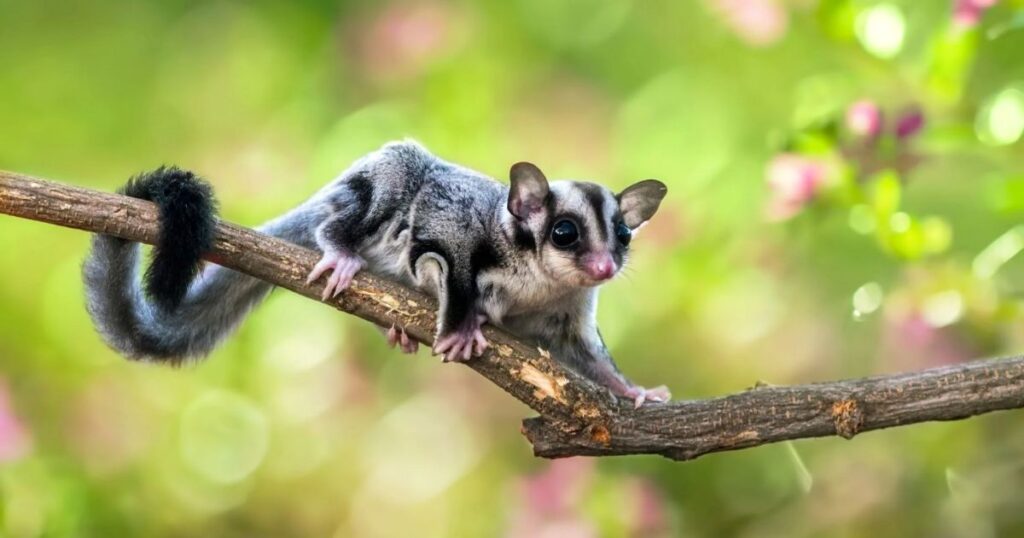
The sugar glider is a small marsupial native to Australia, known for its ability to glide through the air using a patagium, or membrane, that stretches between its forelegs and hindlegs. Nocturnal by nature, sugar gliders feed on a diet of nectar, pollen, fruits, and insects. They are highly social animals that live in family groups, communicating through vocalizations and scent marking.
46. Platypus:
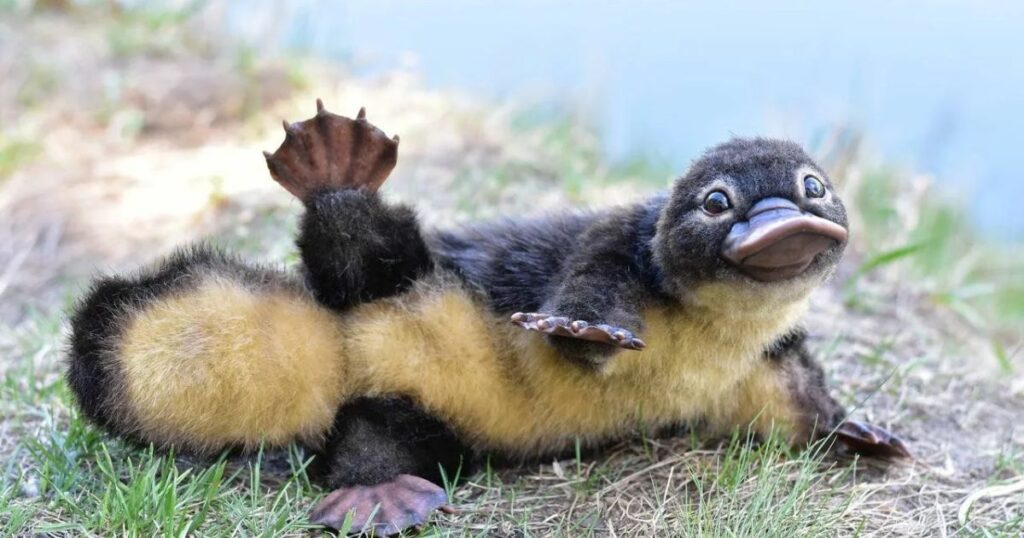
The platypus is a unique mammal found in Australia, known for its duck-bill, webbed feet, and egg-laying reproductive system. Despite its appearance, the platypus is a highly efficient predator, using electroreception to detect prey such as crustaceans and insects in murky waters. Platypuses are semiaquatic, spending much of their time in freshwater habitats, where they construct burrows along riverbanks for shelter and nesting.
47. Tasmanian Devil:
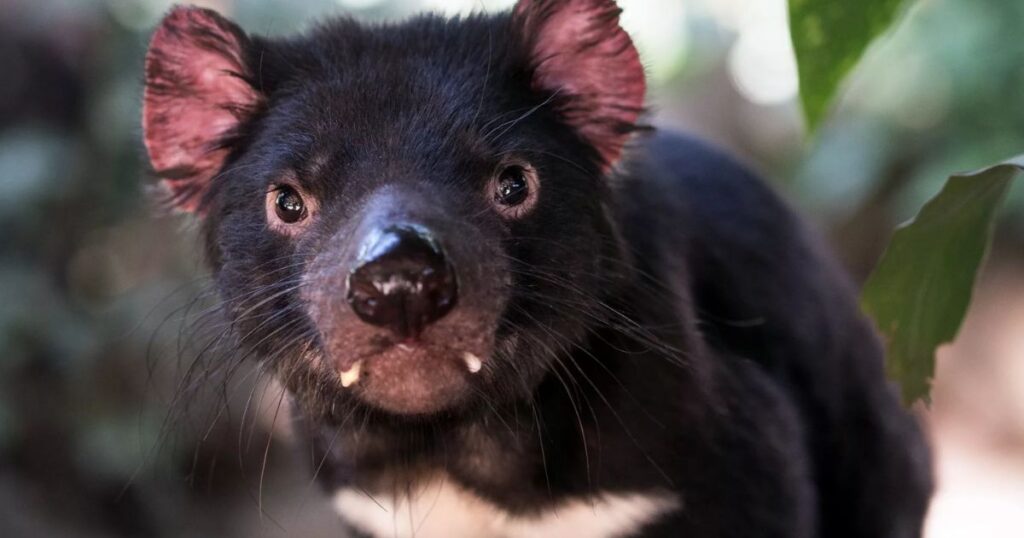
The Tasmanian devil is a carnivorous marsupial found in the wild only on the island of Tasmania, Australia. Known for its stocky build, black fur, and powerful jaws, the Tasmanian devil is a formidable predator and scavenger. Despite their ferocious reputation, Tasmanian devils are primarily solitary animals, coming together only to mate or compete for food. Unfortunately, they face threats from habitat loss, disease, and competition with introduced species, leading to population declines in recent years.
48. Culpeo:
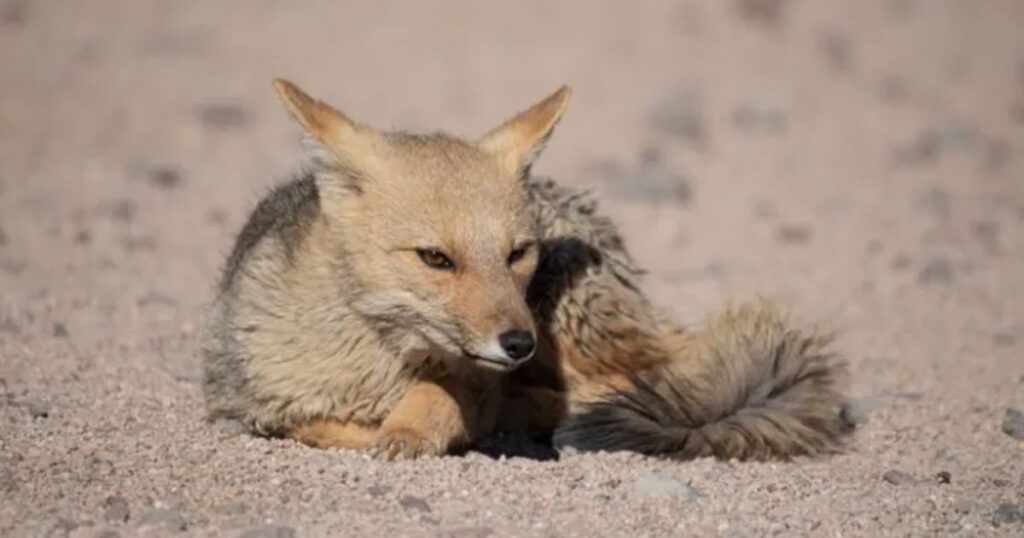
The culpeo, also known as the Andean fox or Andean wolf, is a species of South American fox found primarily in the Andes Mountains. With its reddish-brown fur and bushy tail, the culpeo is well-adapted to its mountainous habitat. Culpeos are opportunistic hunters, preying on small mammals, birds, and carrion, as well as scavenging for fruits and plants. Despite their adaptability, culpeos face threats from habitat loss and hunting for their fur.
49. Verreaux’s Sifaka:
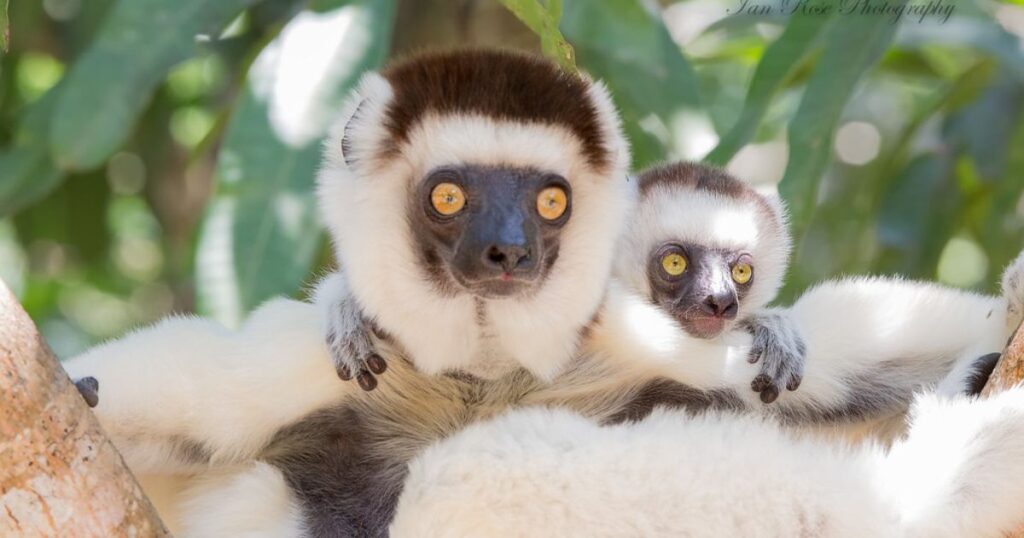
Evreux’s sifaka, also known as the white sifaka or Propithecus verreauxi, is a species of lemur found in Madagascar. Recognizable by its striking black and white fur and long, powerful hind legs, Verreaux’s sifaka is well-adapted to its arboreal lifestyle. These primates are highly social, living in family groups and communicating through vocalizations and body language. Unfortunately, Verreaux’s sifakas are threatened by habitat loss and hunting, leading to declines in their populations across their range.
50. Snowshoe Hare:
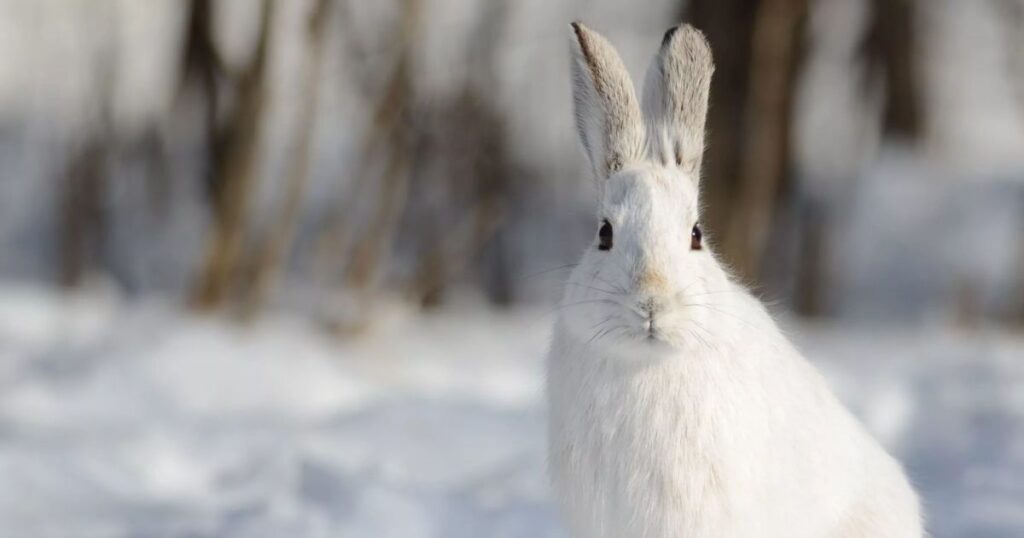
The snowshoe hare is a small mammal found in the northern forests of North America, known for its large hind feet and seasonal coat color changes. In summer, snowshoe hares have brown fur to blend in with their surroundings, while in winter; their fur turns white to camouflage them in the snow. Snowshoe hares are herbivores, feeding on a diet of grasses, herbs, and woody plants. They play important roles in their ecosystems as prey for predators such as lynx, coyotes, and owls.

Jackson is a seasoned professional in the field of pets, boasting four years of enriching experience. His expertise spans pet care, training, and health, ensuring insightful and reliable content for pet enthusiasts on our site.

